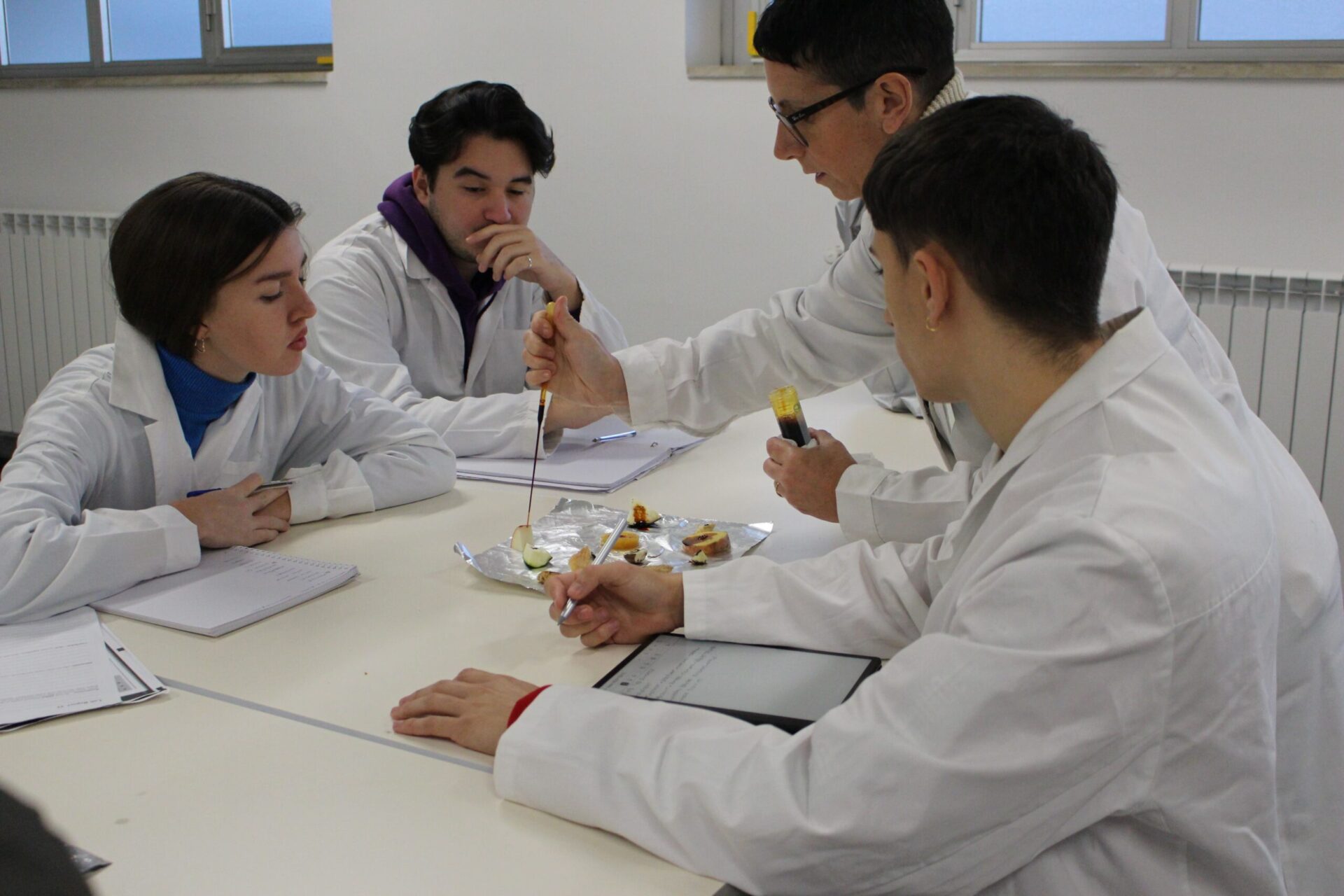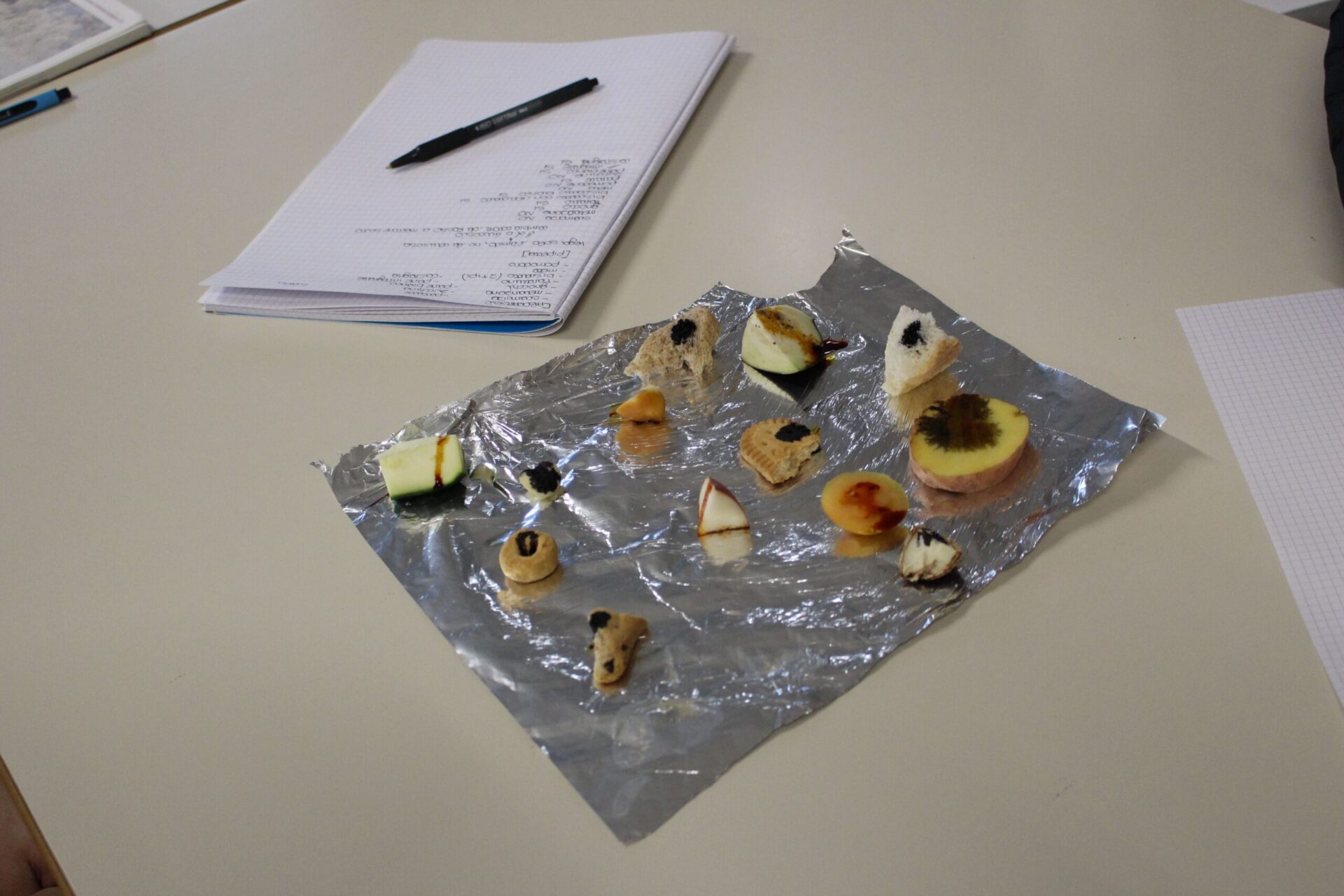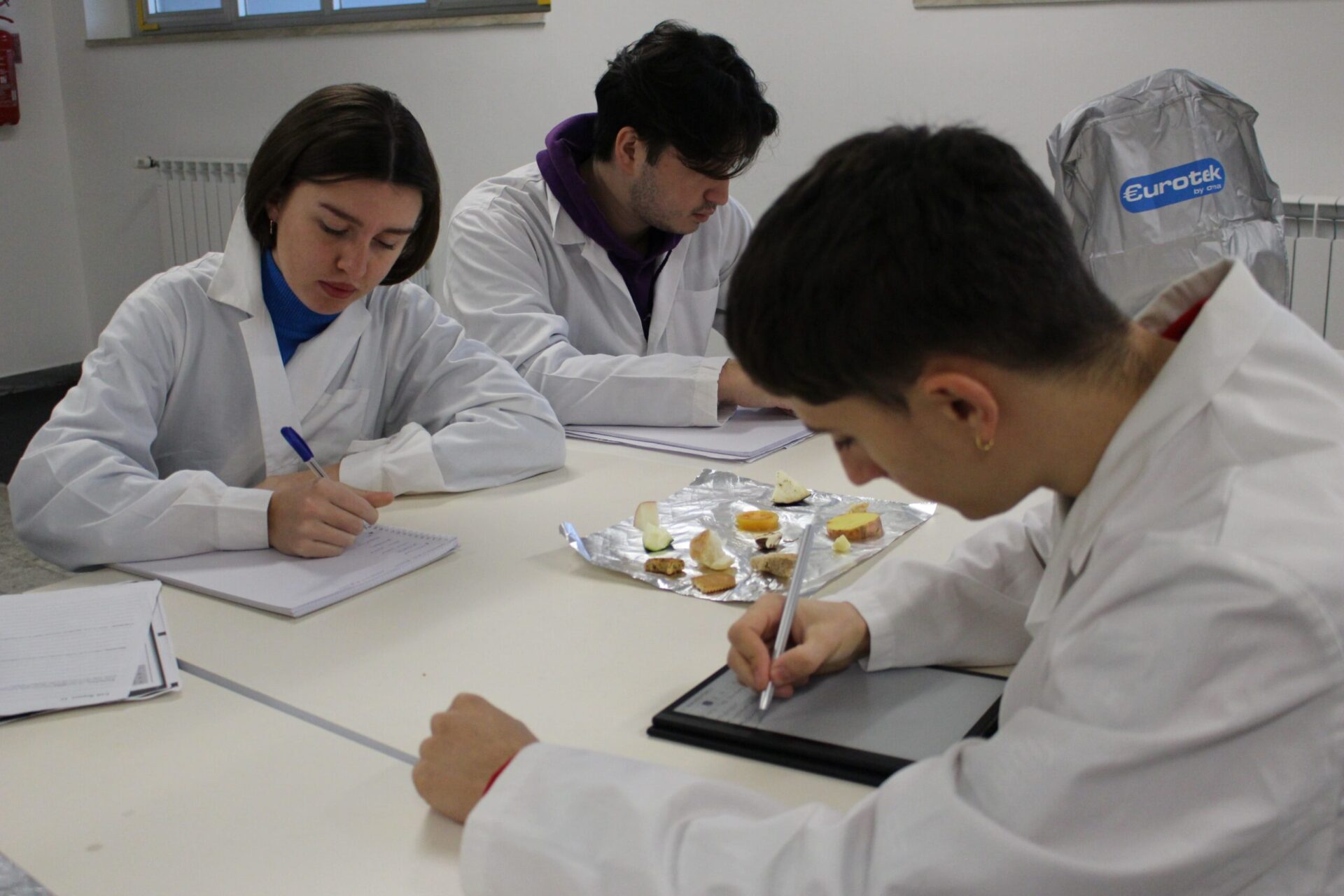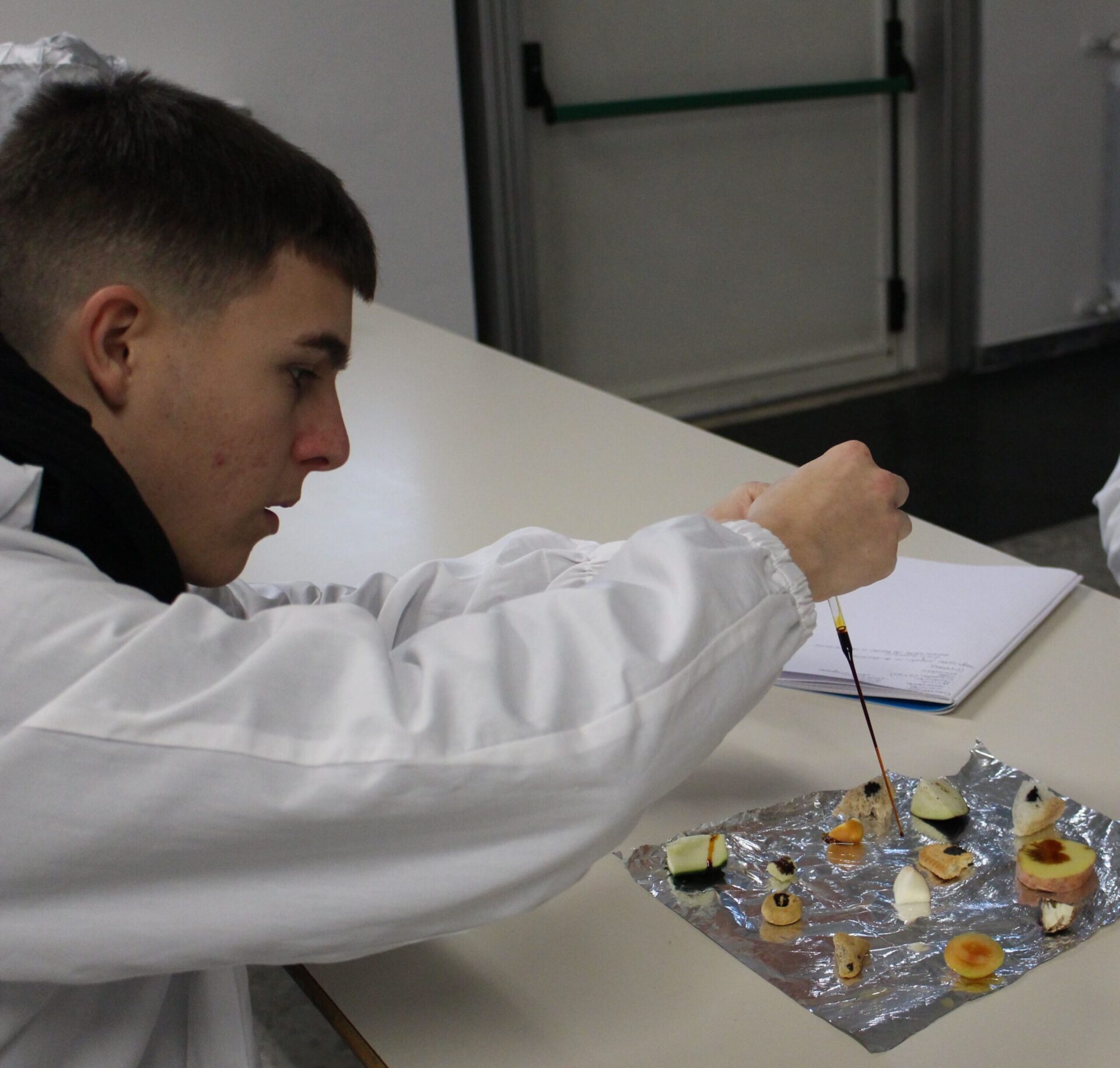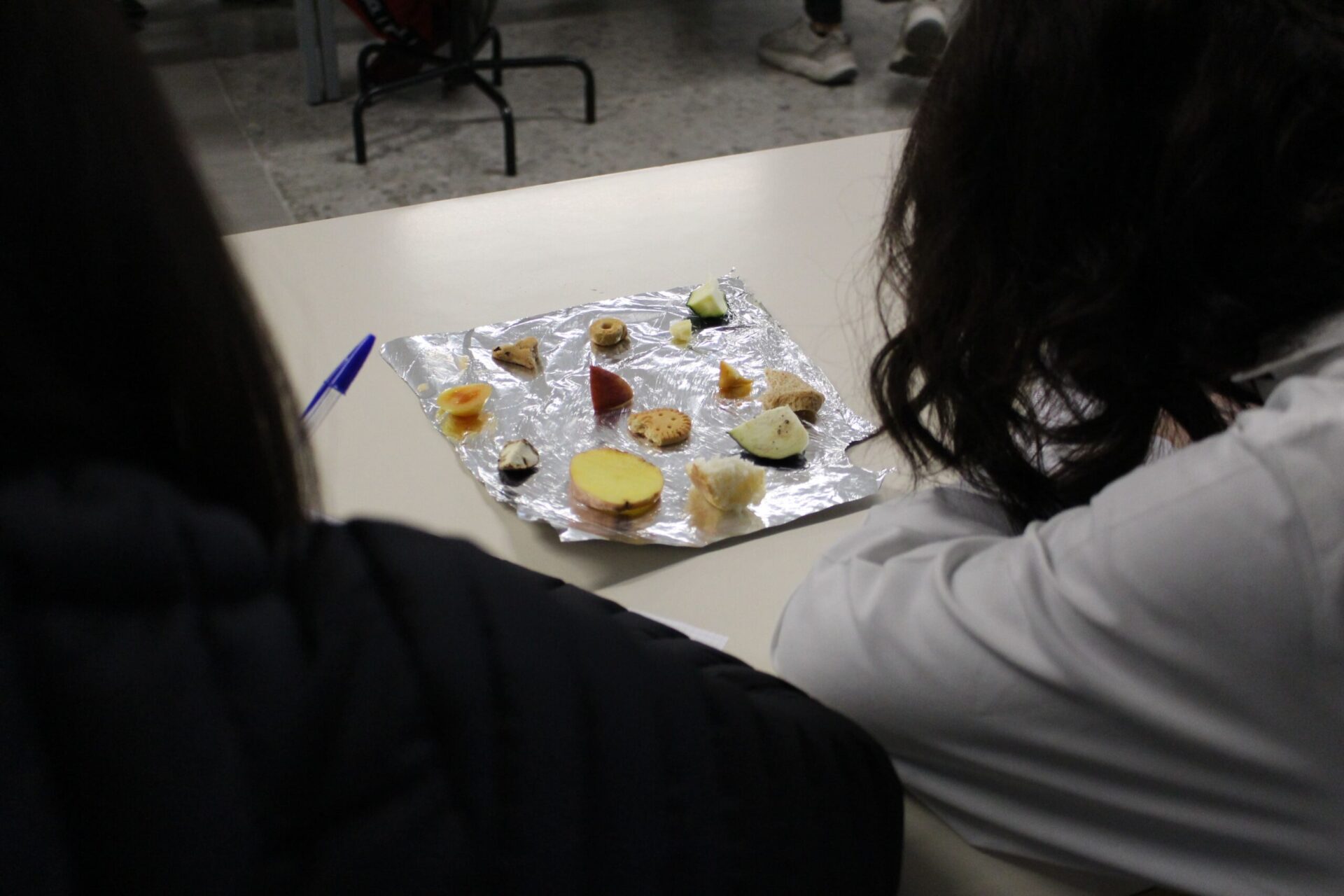Finalmente di nuovo sulla neve insieme!!! I ragazzi delle Scuola Secondaria di Primo grado e dei Bienni Linguistico e Scientifico tutti insieme a San Martino di Castrozza per una settimana di sci, risate e divertimento!
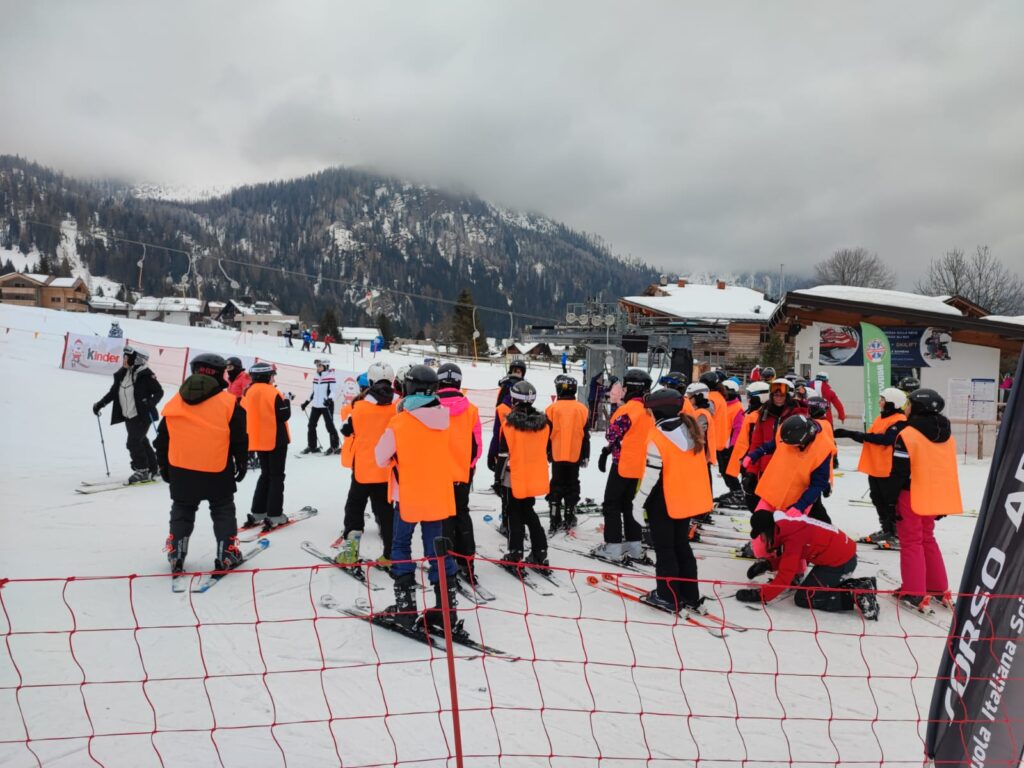
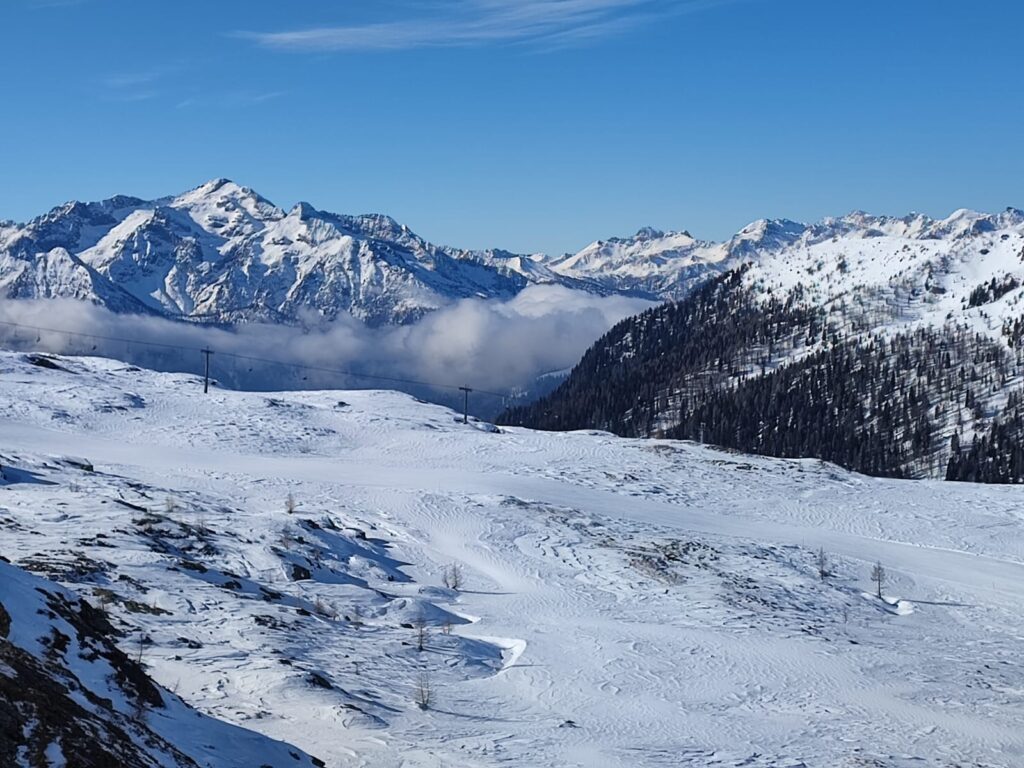
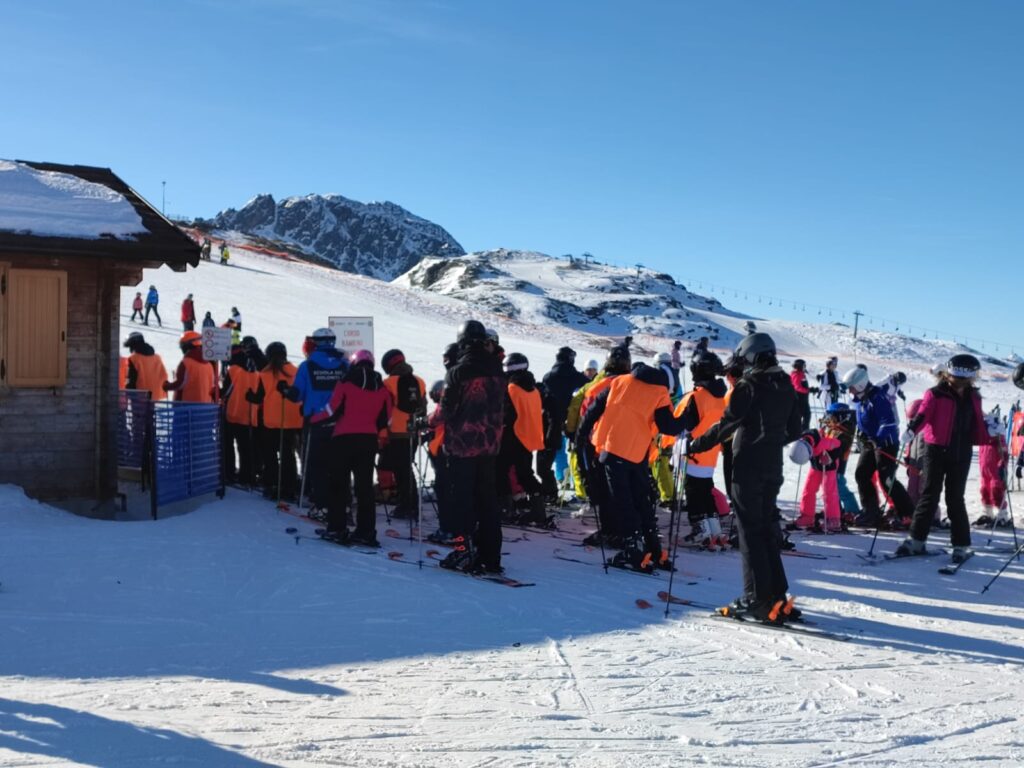
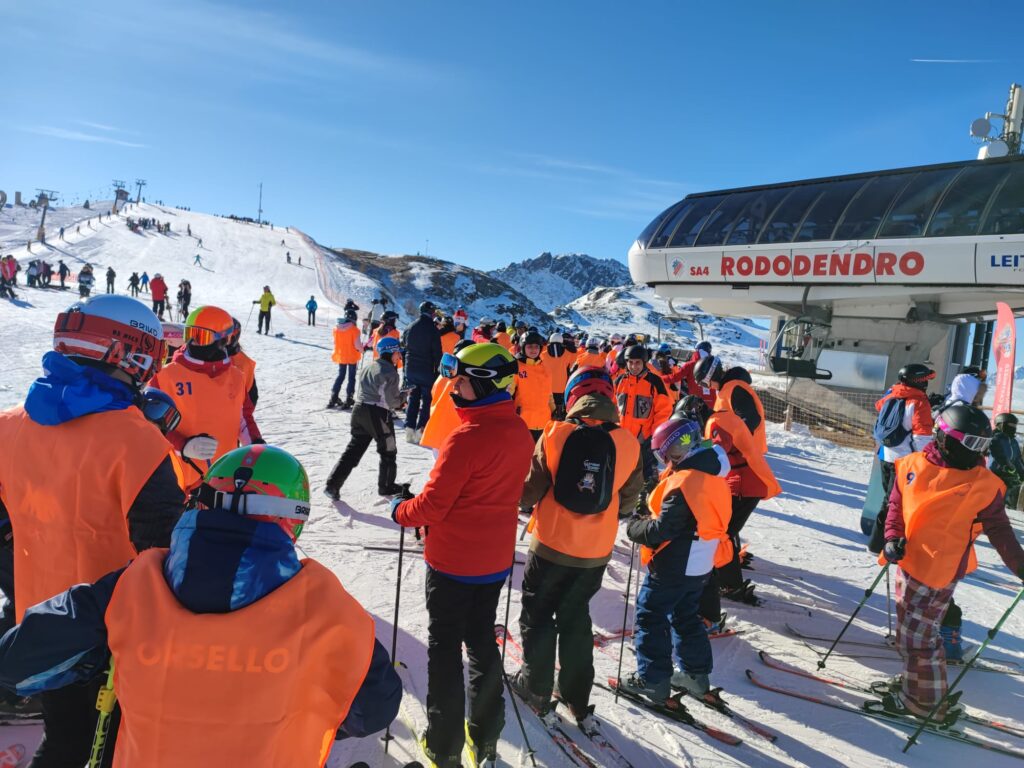
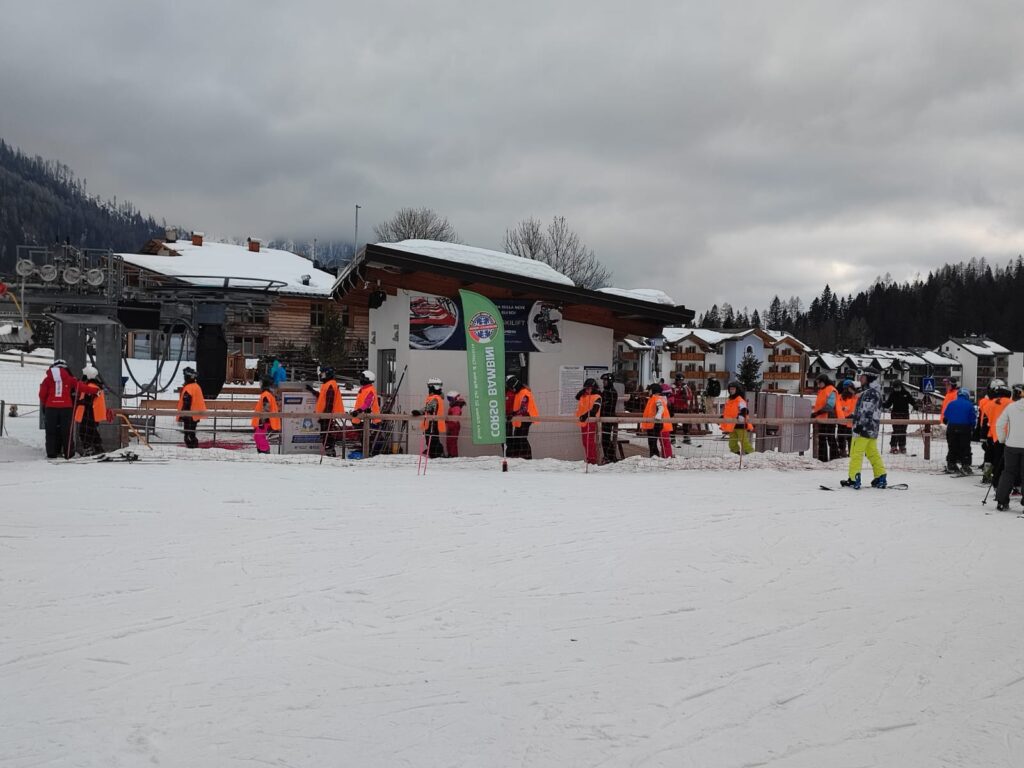
As part of our science lessons focused on Astronomy, we began by investigating the Earth’s movements related to rotation and revolution. In order to be sure that our first-year scientific high school students clearly understood the lesson, we introduced related vocabulary by doing a bit of movement ourselves. Students were grouped together and then working as a team, in a timed competition, had to find, communicate, match definitions with each vocabulary word.
Come prima lezione di Geografia Astronomica, con i nostri ragazzi del 1° liceo scientifico abbiamo voluto imparare un po' di termini “astronomici”. Per farlo abbiamo fatto un po' di movimento! Gli studenti sono stati divisi in gruppi e, con un gioco di squadra in una competizione a tempo, hanno dovuto trovare, comunicare e abbinare le varie definizioni date con ogni parola del vocabolario “astronomico” fornito.
Ben fatto, Ragazzi!
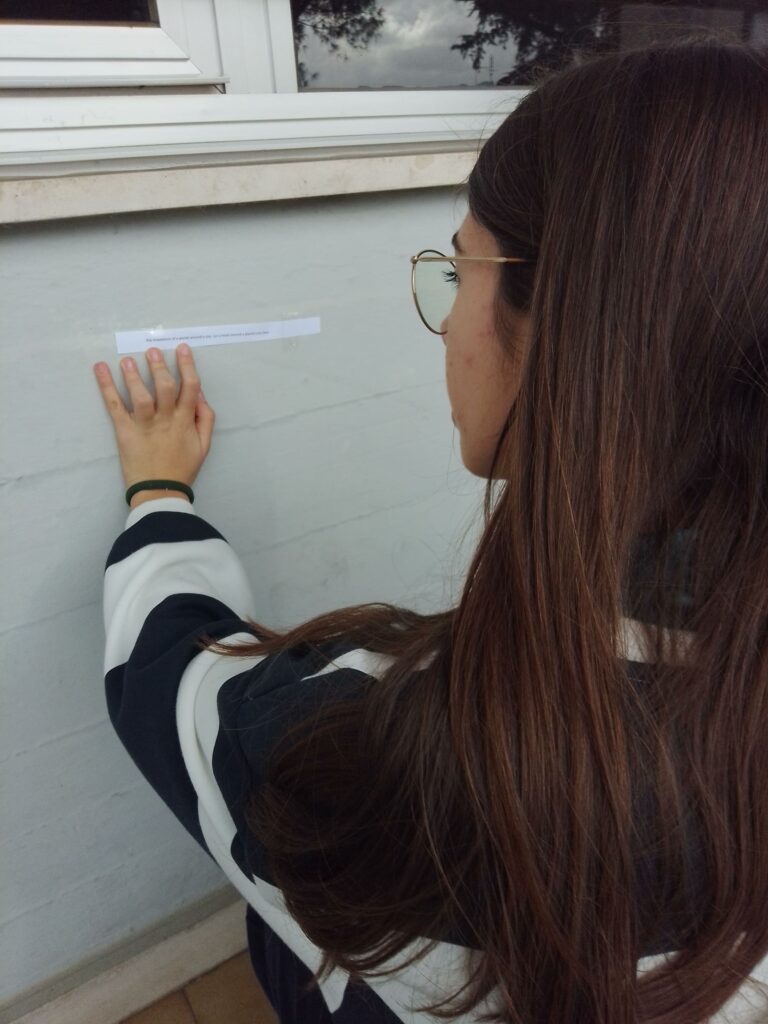

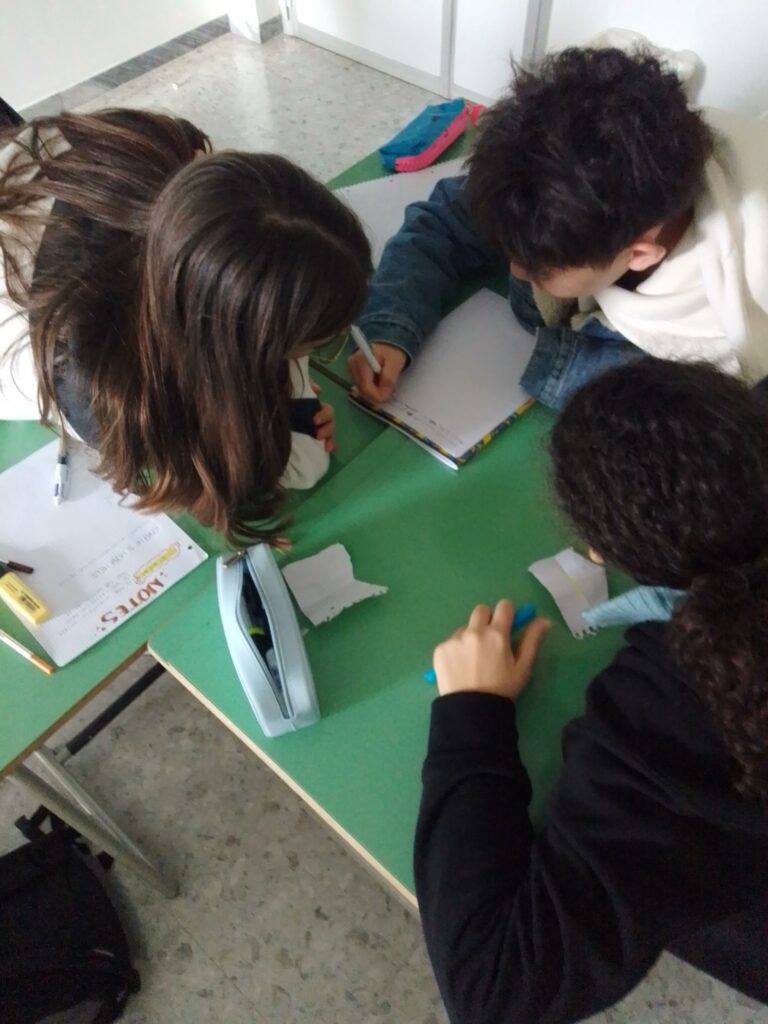
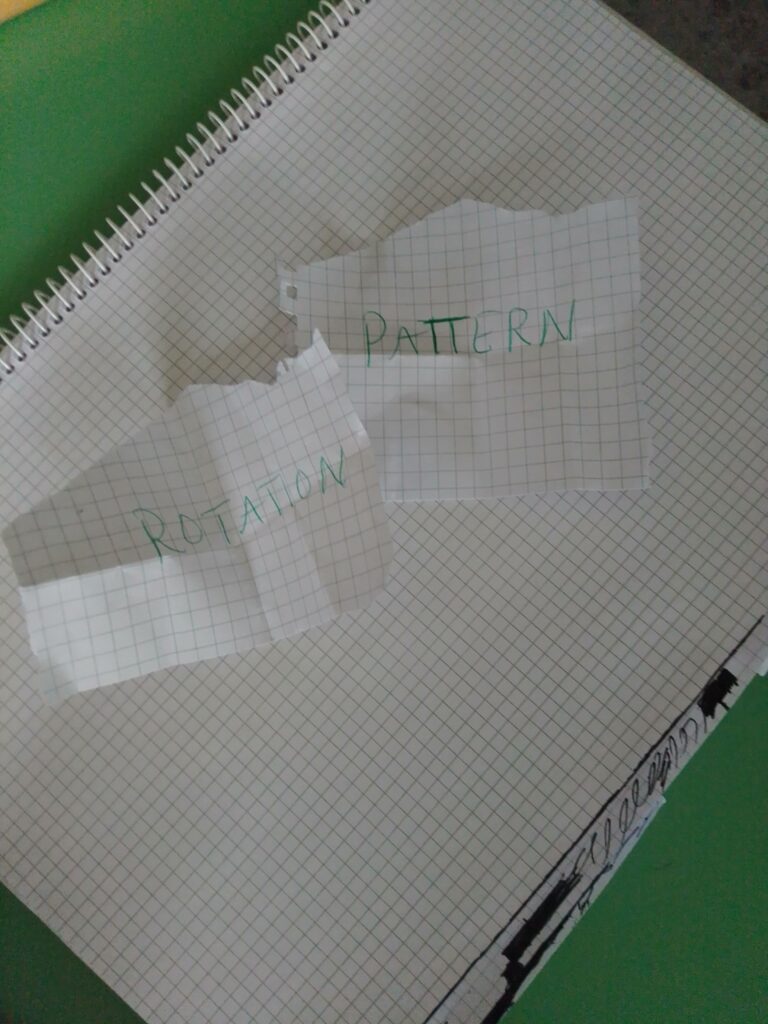
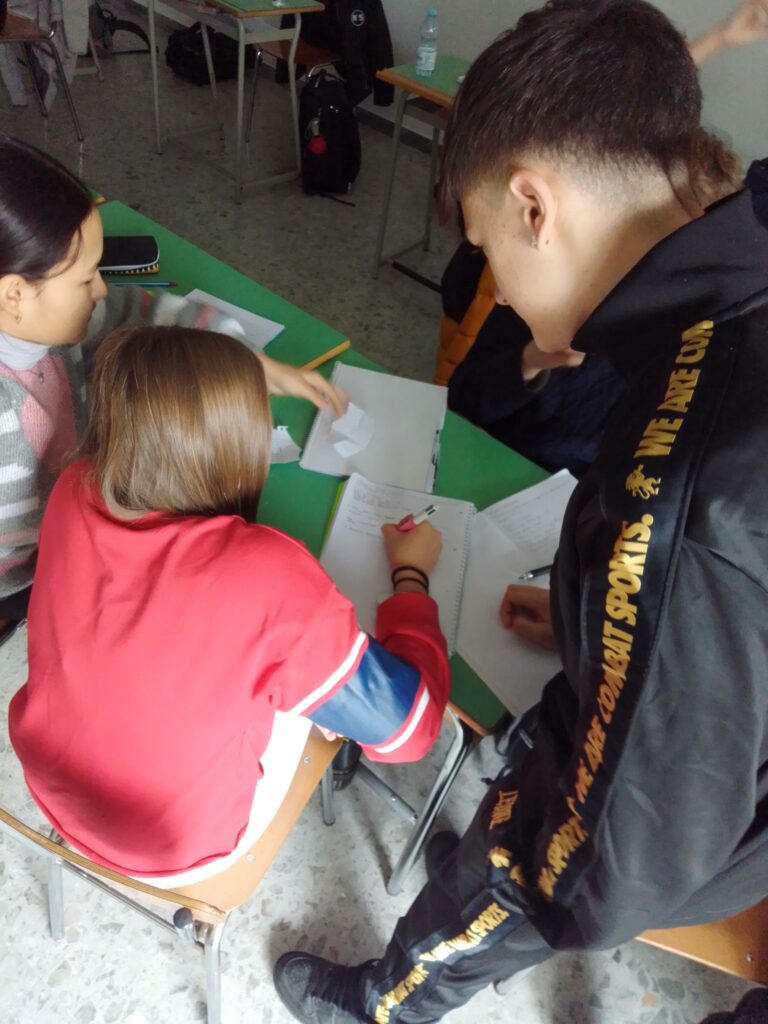
In the year 2005, The United Nations General Assembly designated January 27—the anniversary of the liberation of Auschwitz-Birkenau—as International Holocaust Remembrance Day. Each year on this date, citizens are encouraged to commemorate the victims of this artrocious event, in a continued effort to keep the memory alive and to prevent future acts of genocide.
In recognition of International Holocaust Remembrance Day, the scholastic Institute San Giuseppe di Caburlotto had the honor of hosting Mr. Gianni Polgar, a holocaust survivor. Mr Polgar spoke about his experience as a Jewish child living in Rome during the German occupation of northern and central Italy.
Our third, fourth and fifth year high school students had an opportunity to engage in dialogue with Mr. Polgar asking him about his personal experiences and opinions on discrimination. Our hope is that through these honest conversations, our students will continue to learn and grow, becoming ever more responsible and compassionate citizens.
Nell'anno 2005, l'Assemblea generale delle Nazioni Unite ha designato il 27 gennaio, anniversario della
liberazione di Auschwitz-Birkenau, come Giornata internazionale della memoria dell'Olocausto. Ogni anno in questa data, i cittadini sono incoraggiati a commemorare le vittime di questo evento atroce, in uno sforzo continuo per mantenere viva la memoria e prevenire futuri atti di genocidio.
In occasione della Giornata Internazionale della Memoria, l'Istituto scolastico San Giuseppe di Caburlotto ha avuto l'onore di ospitare Gianni Polgar, sopravvissuto all'Olocausto. Il signor Polgar ha parlato della sua esperienza di bambino ebreo vissuto a Roma durante l'occupazione tedesca del nord e centro Italia.
I nostri studenti delle scuole superiori del terzo, quarto e quinto anno hanno avuto l'opportunità di dialogare con il signor Polgar chiedendo di raccontare le sue esperienze personali e le sue opinioni sulla discriminazione. La nostra speranza è che attraverso queste conversazioni oneste, i nostri studenti continuino a imparare e crescere, diventando cittadini sempre più responsabili e compassionevoli.
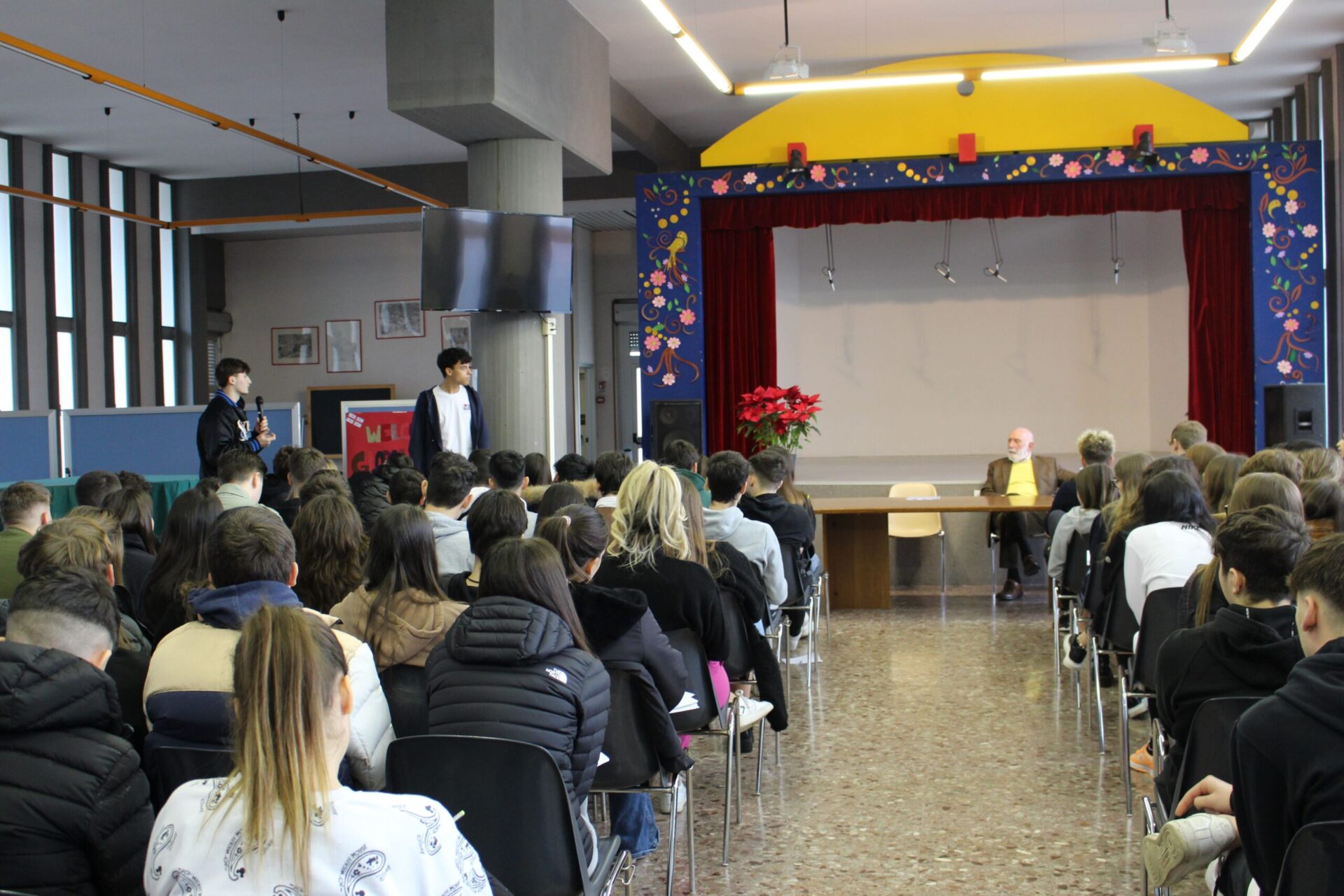
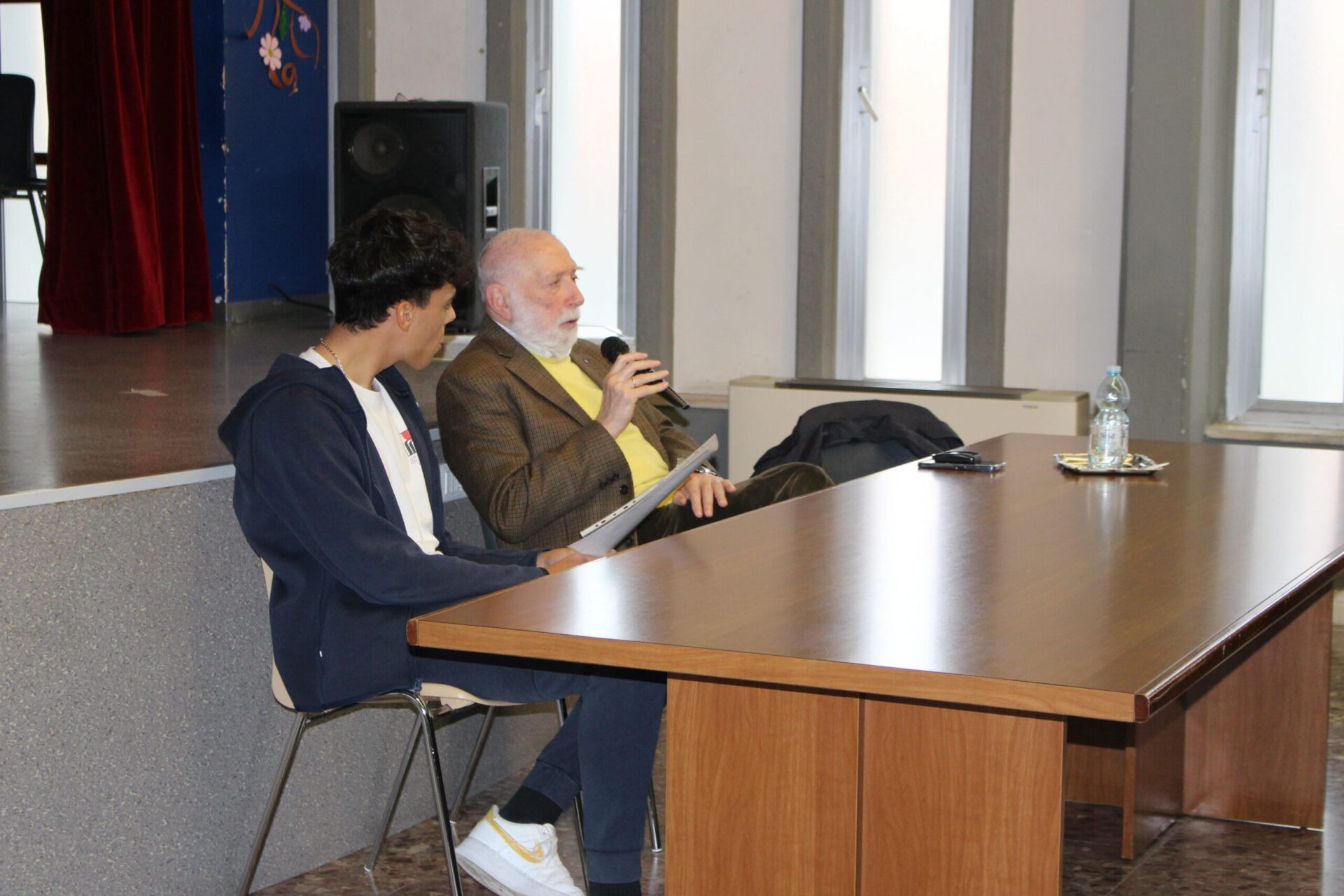
The mole is a scientific unit of measurement which corresponds to the mass of a substance containing 6.023 x 10²³ particles of that substance.
Our budding first year scientists put their names on the line for this experiment. We wanted to test the theory that it’s possible to find the number of moles in each students’ name. Using the simple technique of finding the mass of calcium carbonate (CaCO3), otherwise known as chalk, both before and after writing their names on paper, our students were able to deduct how much chalk was consumed and with some quick calculations, we found our answer. Each student had a different answer depending on how much chalk they used for their signature.
La mole è un unità di misura fondamentale della quantità di materia ed esprime un determinato numero di particelle indicato dal numero di Avogadro: 6.023 x 10²³! I ragazzi del primo Liceo Scientifico hanno contato quante moli ci sono nel loro nome, calcolando la massa di gesso (carbonato di calcio) utilizzata per scrivere il loro nome. L’applicazione di una semplice formula ha permesso loro di sapere quante molecole di carbonato di calcio, e quindi quante moli, ci sono nel loro nome!
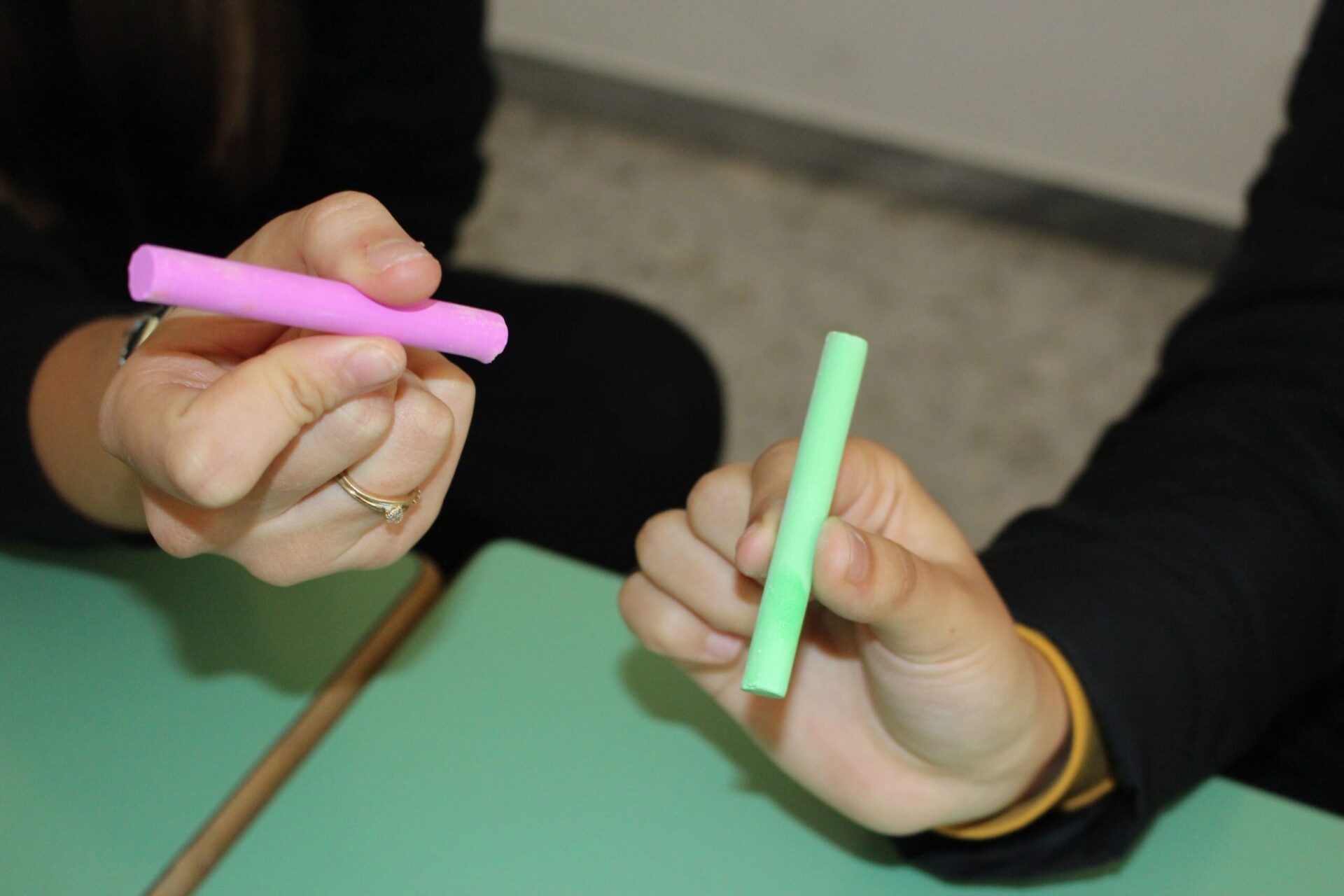
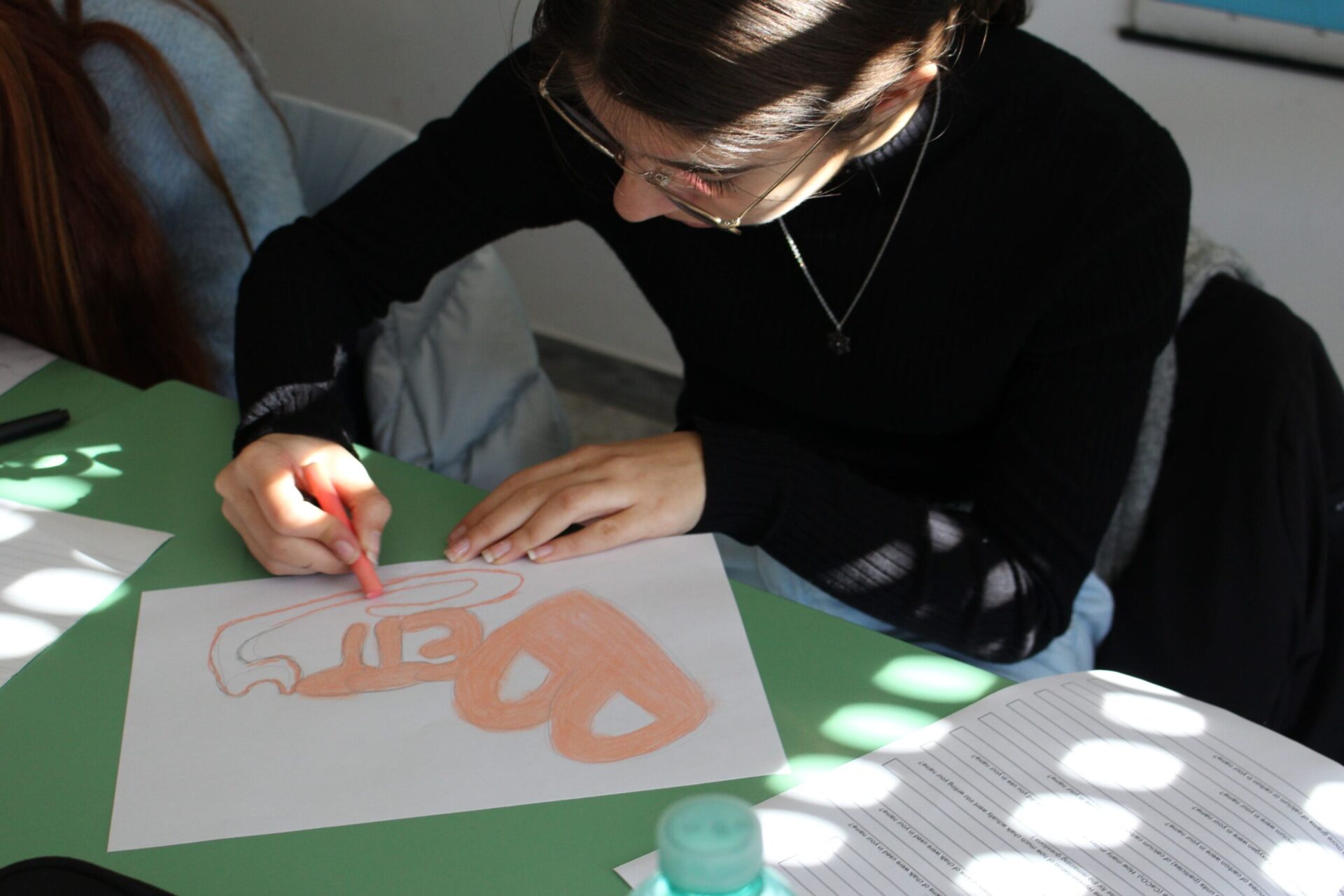
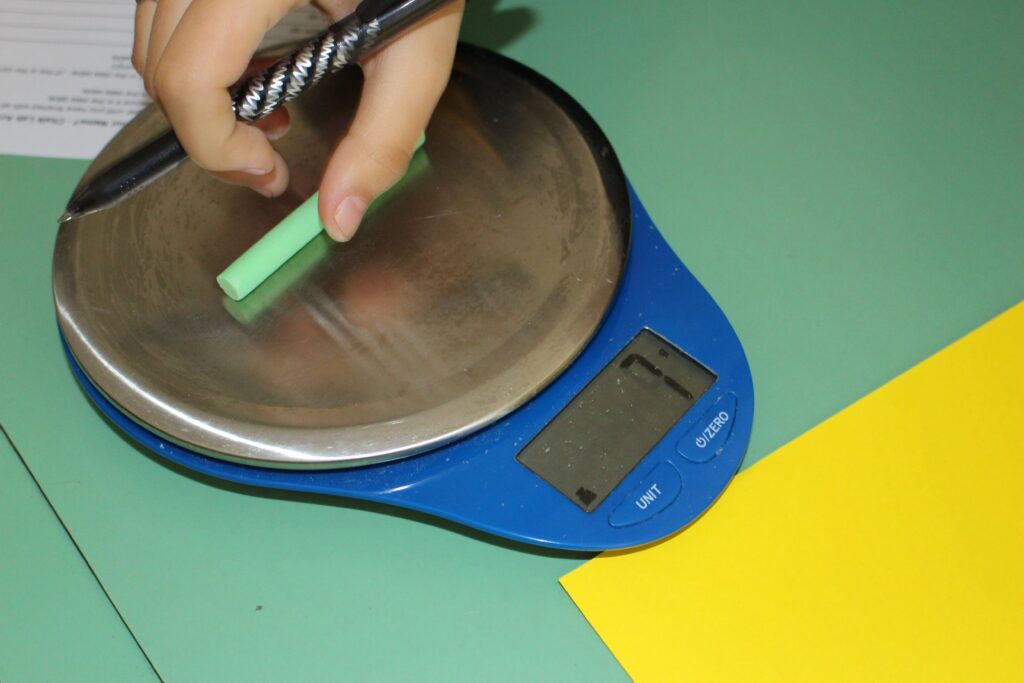
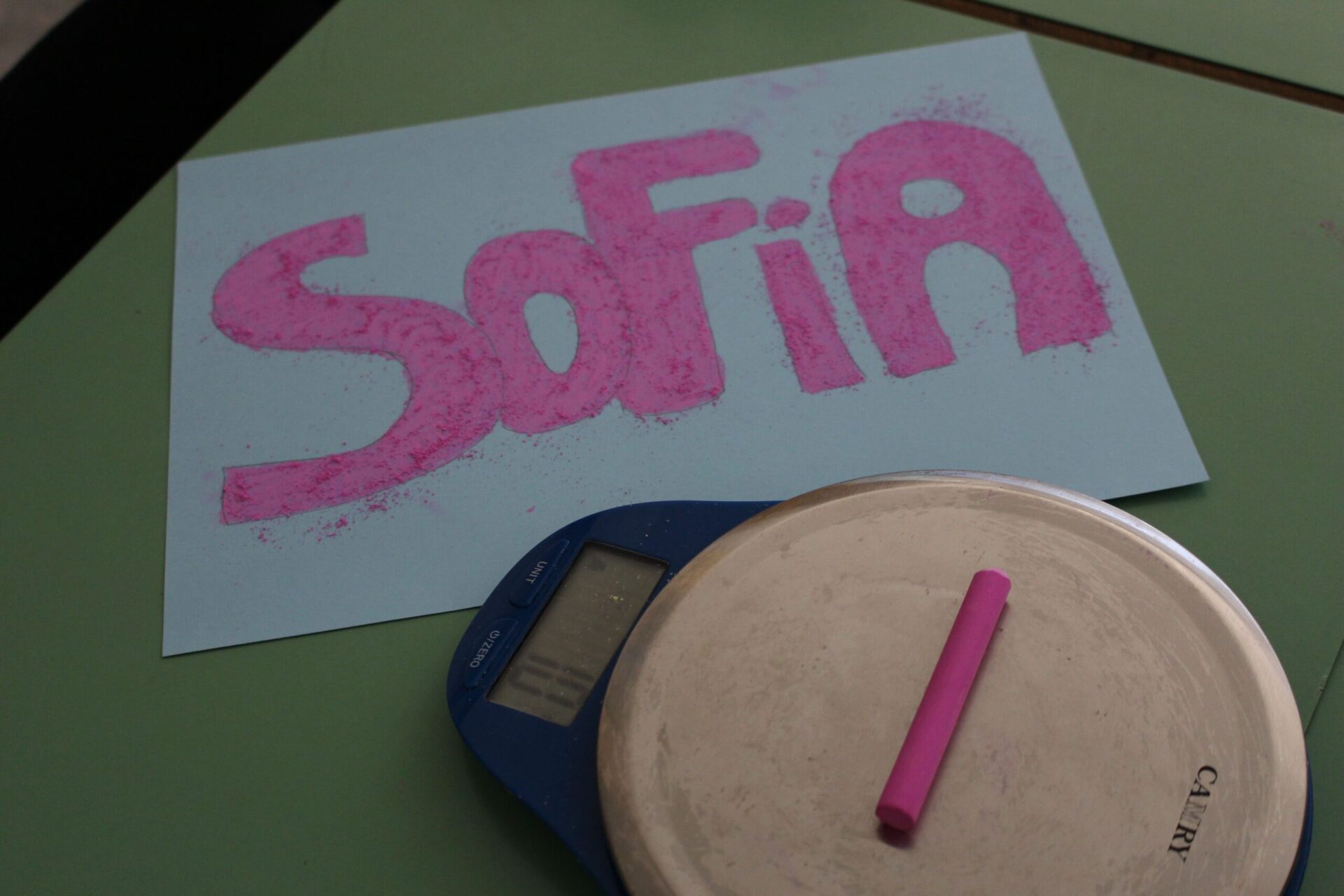
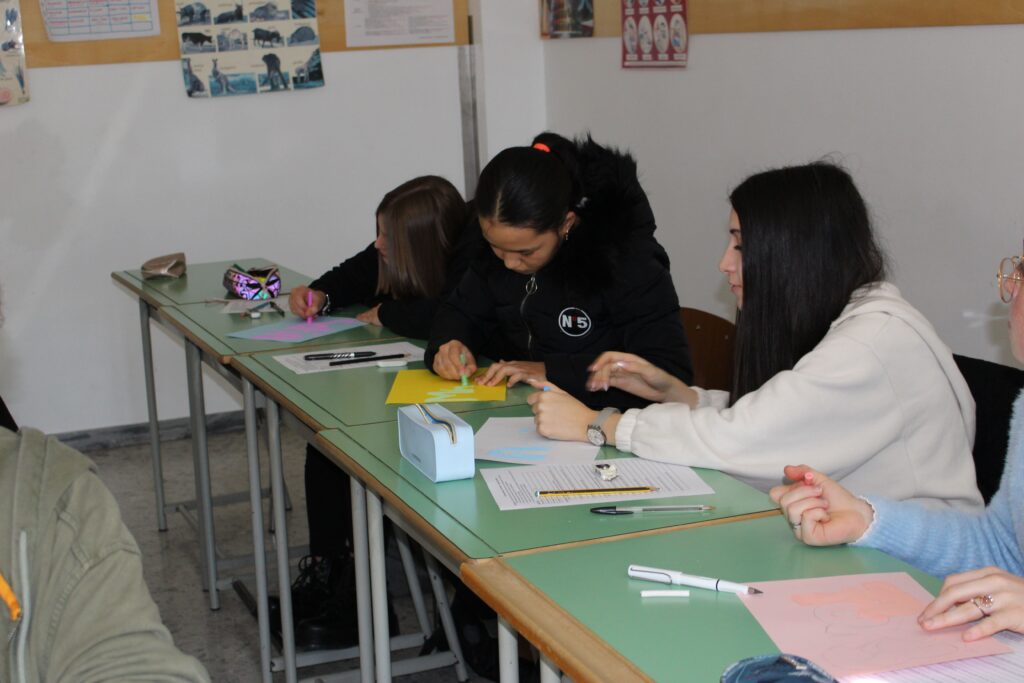
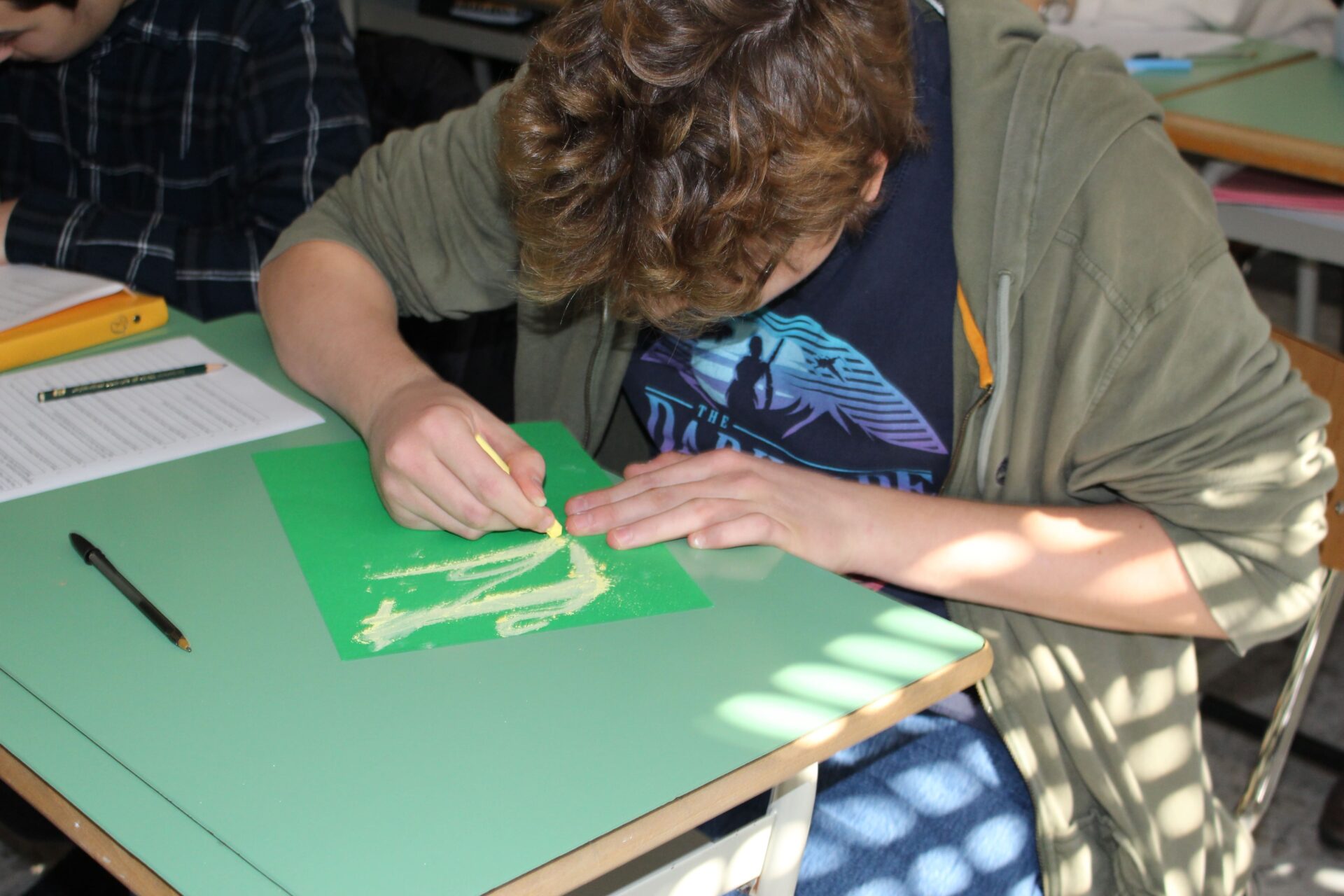
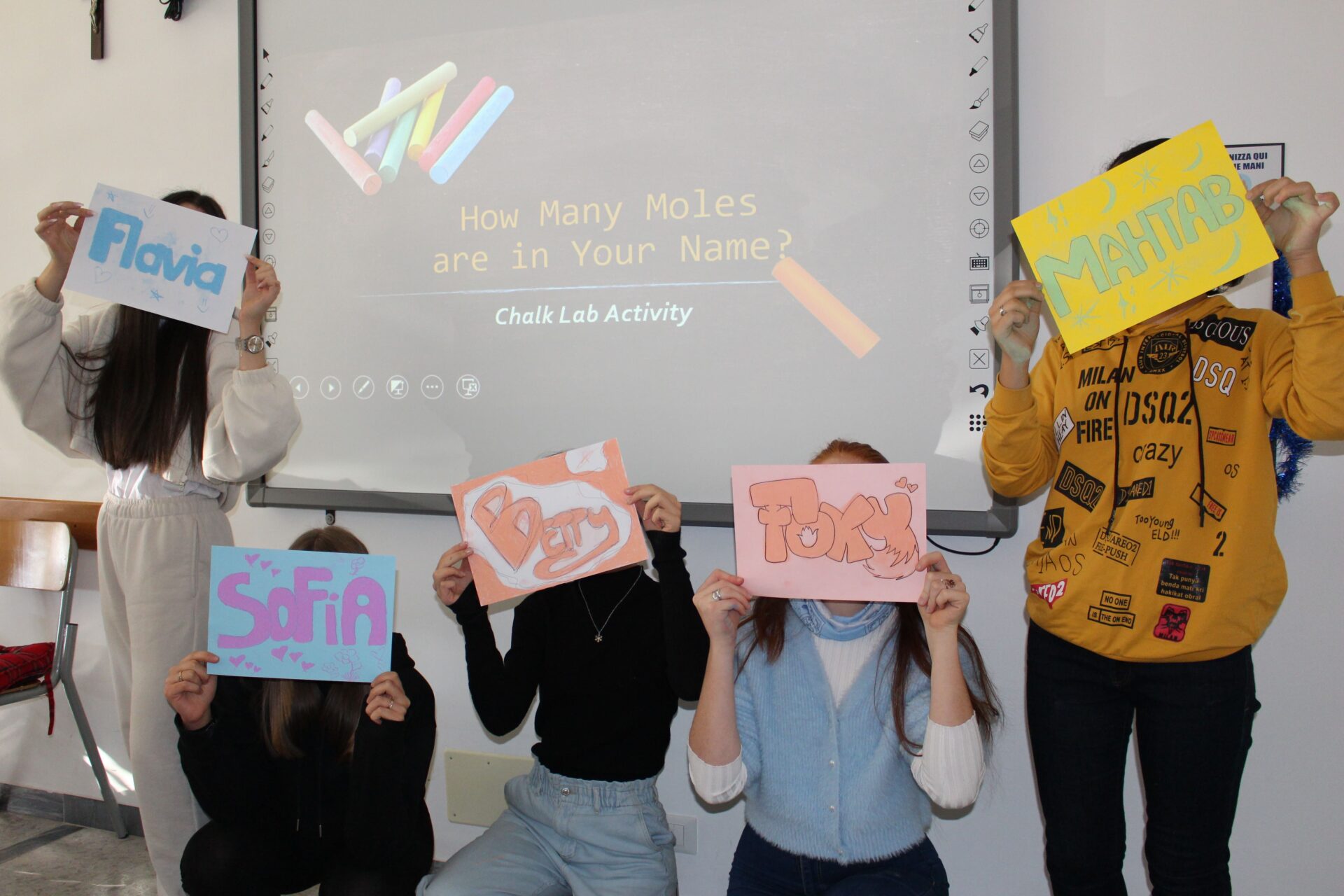
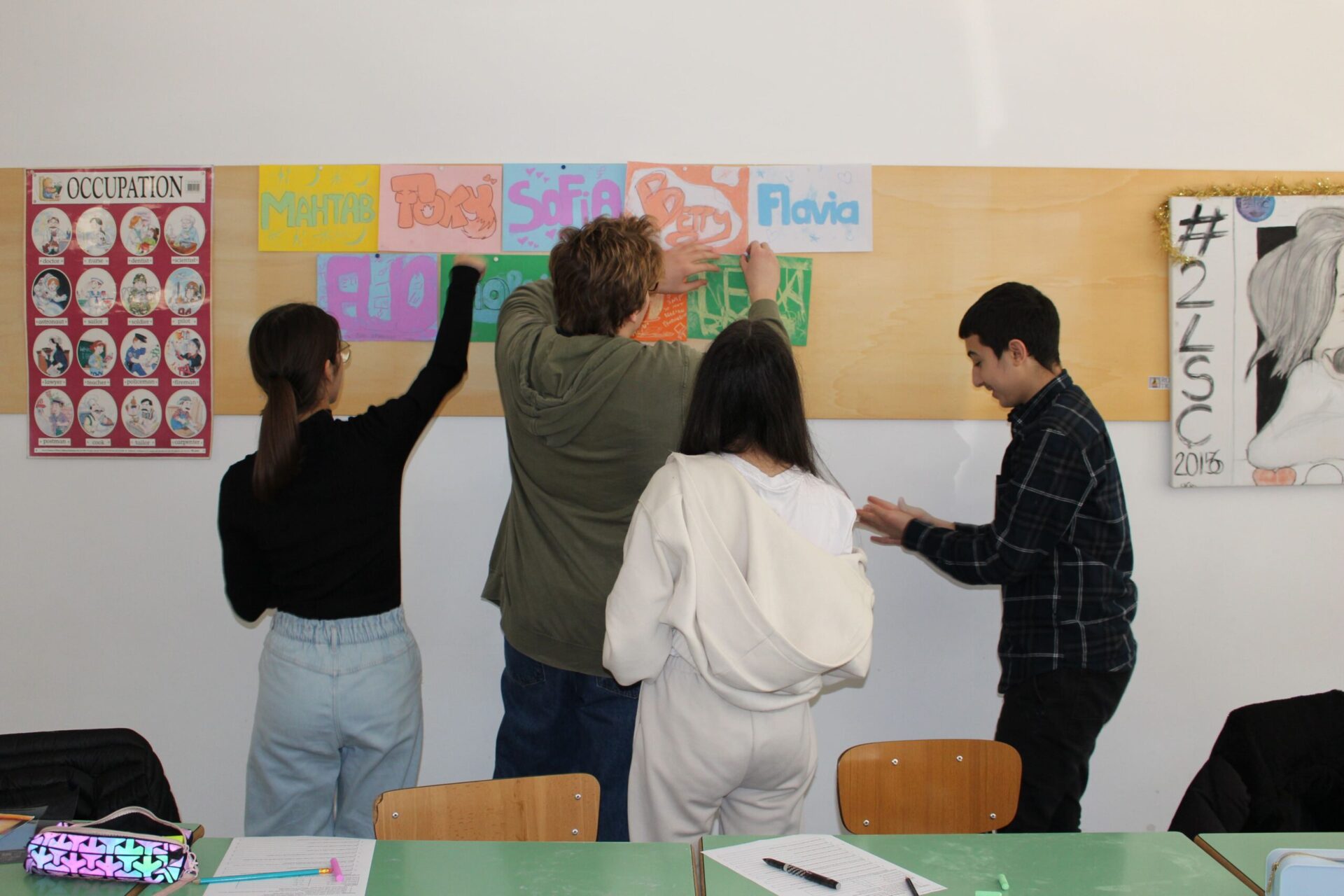
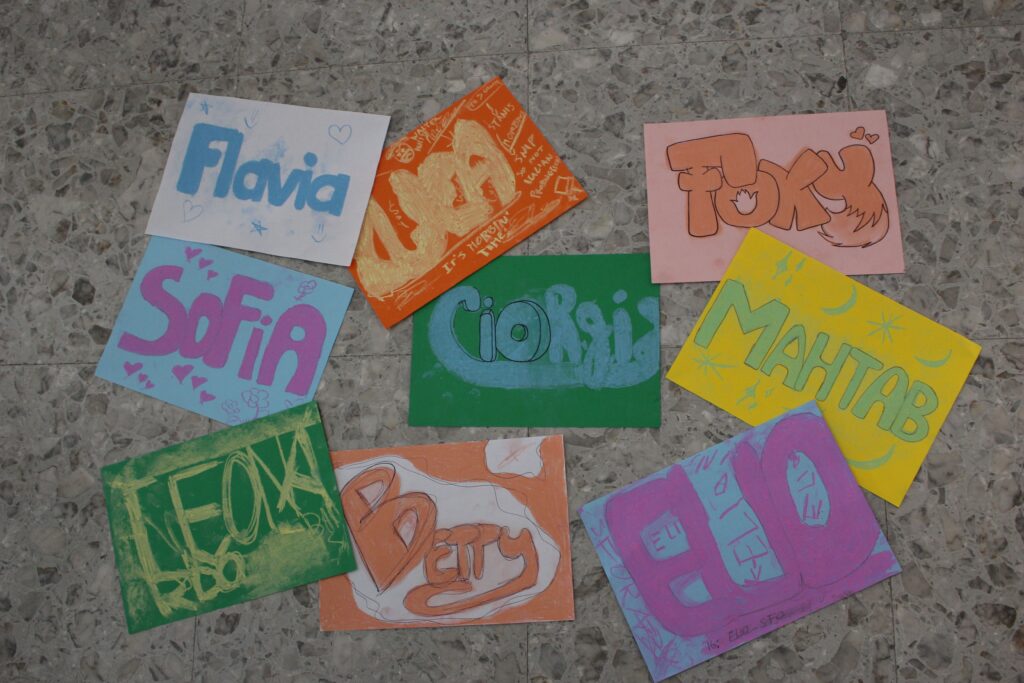
Vi siete mai chiesti come una quercia alta decine di metri possa “bere” l’acqua del suolo? La risposta è facile…grazie alla capillarità, la capacità dell’acqua di risalire tubicini di piccolo diametro percorrendo grandi distanze contro la forza di gravità. Sfruttando questa incredibile proprietà gli studenti del 2° Liceo Scientifico hanno “colorato” i petali di fiori bianchi immersi in acqua colorata di rosso, rendendo il nostro laboratorio scientifico ancora più bello!
Is it really possible to transform a white flower into a red one? It may seem like a party trick but even our 2nd year Scientific High School students got in on the colour changing action. Equipped with bouquets of simple white flowers they explored how the scientific phenomenon called “capillary action” works. Thanks to water’s unique properties of adhesion and cohesion, water (in our case, coloured water) moves upward through a type of tissue called the xylem. This water is carried through the stem, leaves and even petals of the flower causing a miraculous and colourful metamorphosis.
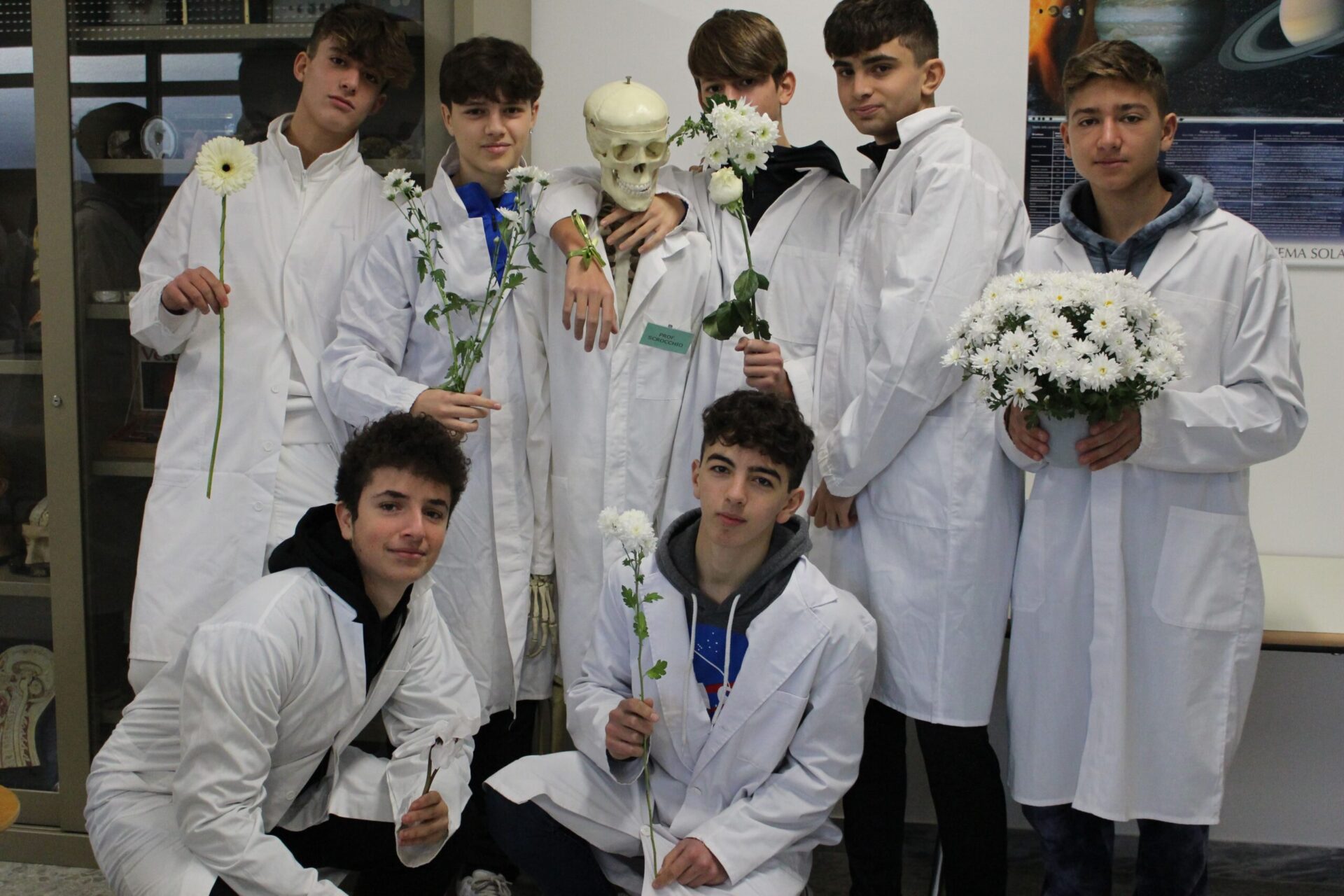

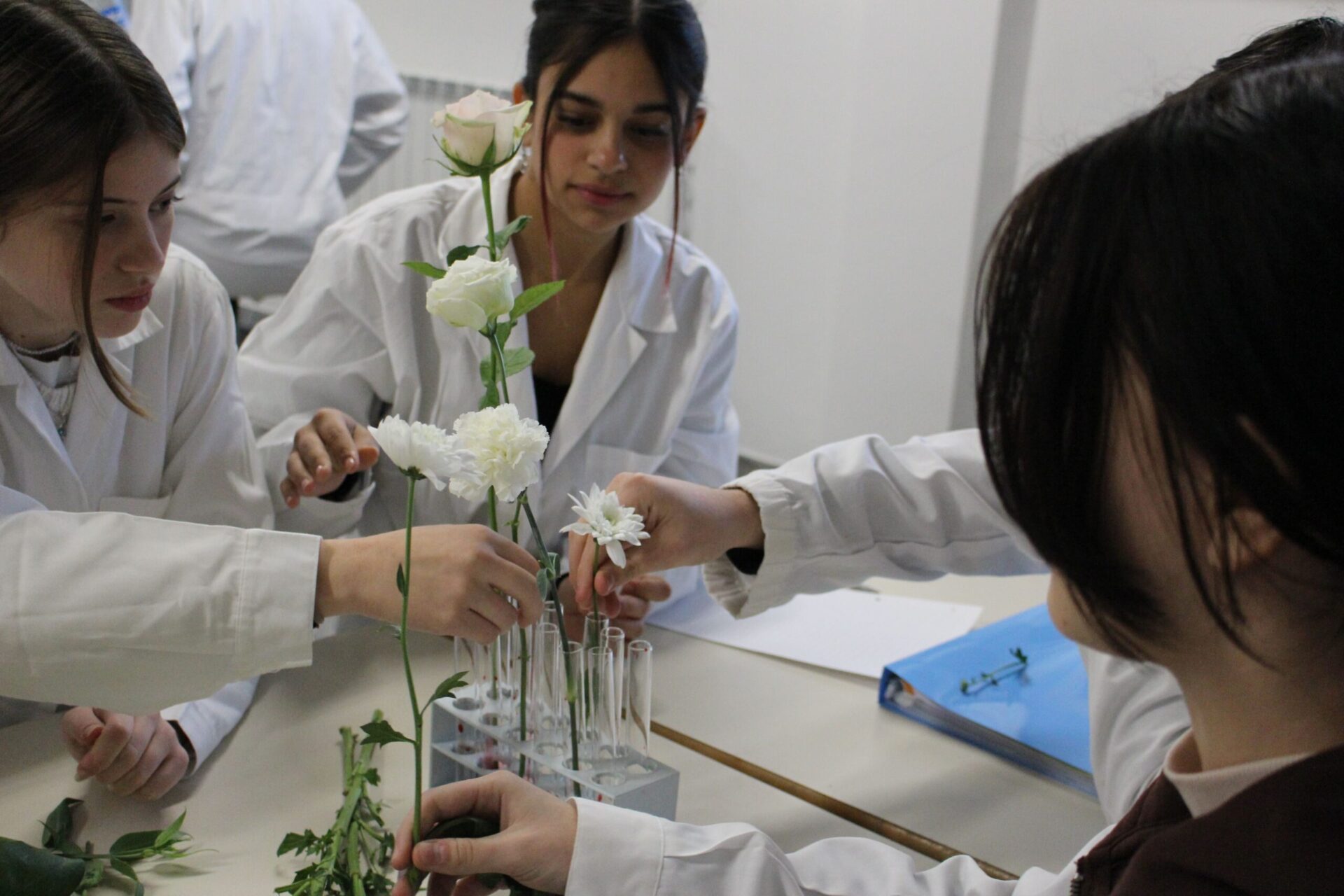
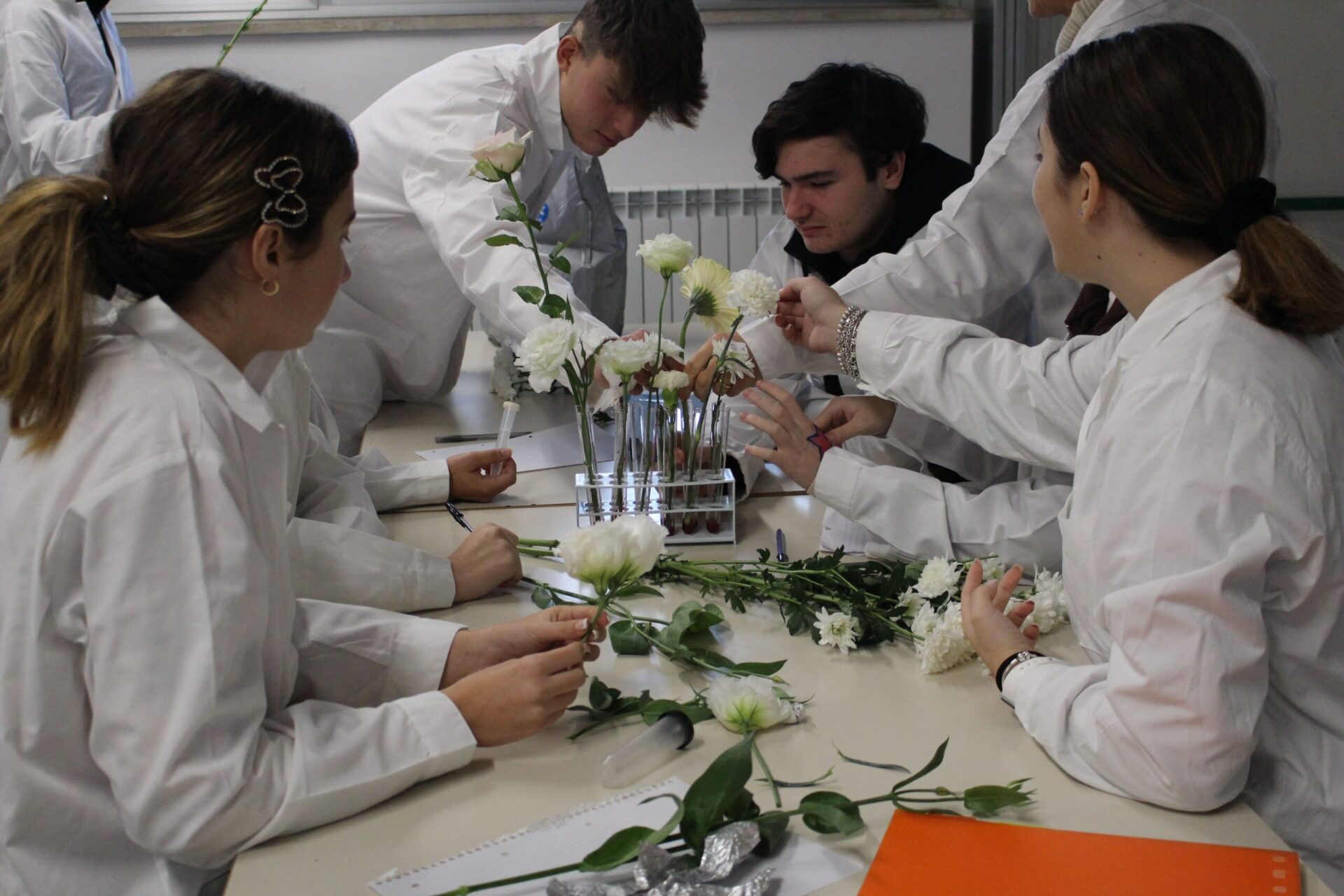
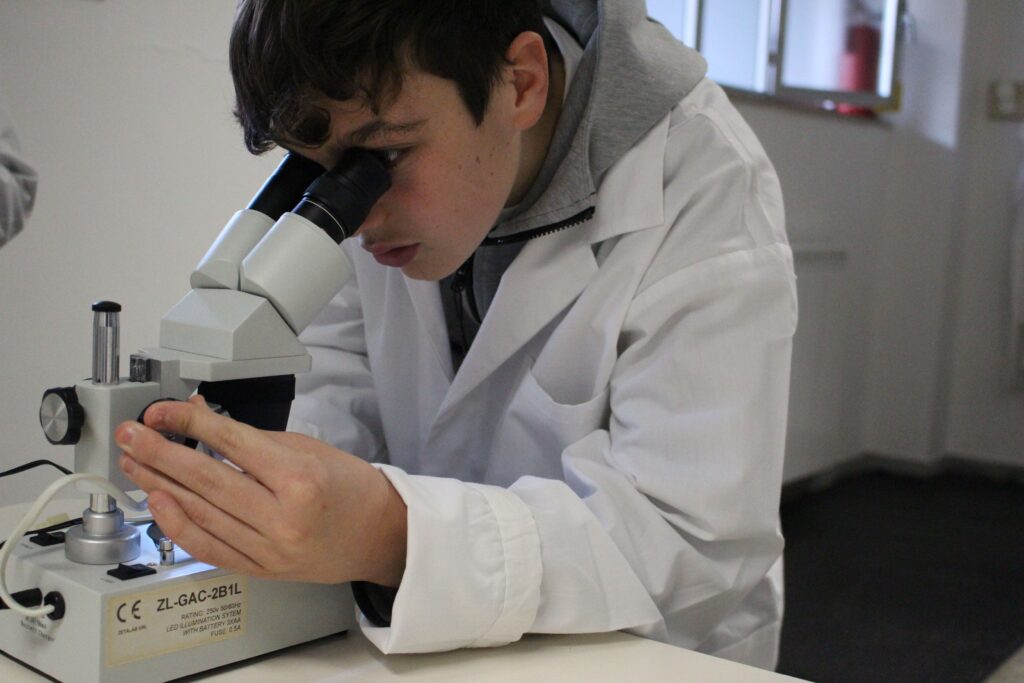
L’Osmosi è un processo spontaneo durante il quale l’acqua si muove da una soluzione più concentrata a una soluzione più diluita. I ragazzi del 4° Liceo Scientifico hanno osservato questo fenomeno immergendo una foglia di insalata in acqua salata confrontandola con una immersa in acqua distillata. Il risultato è stato evidente! Per osmosi, l’acqua contenuta nelle cellule della prima foglia si è spostata verso l’acqua salata rendendo la foglia “floscia” e rimpicciolita!
Osmosis provides the primary means by which water is transported into and out of cells. Water naturally moves from areas of low salt concentrations to areas of high salt concentrations. By submerging two leaves of lettuce in water (one in fresh water and the other in salt water) our 4th year Scientific High School students were able to observe this process first hand. The first leaf of lettuce immersed in fresh water maintained its form and size, while the second leaf, immersed in the salt water began to show the effects of osmosis after a short time. The water contained in the leaf of lettuce began to migrate out toward the salt solution leaving the lettuce leaf wilted and shrunken in size.
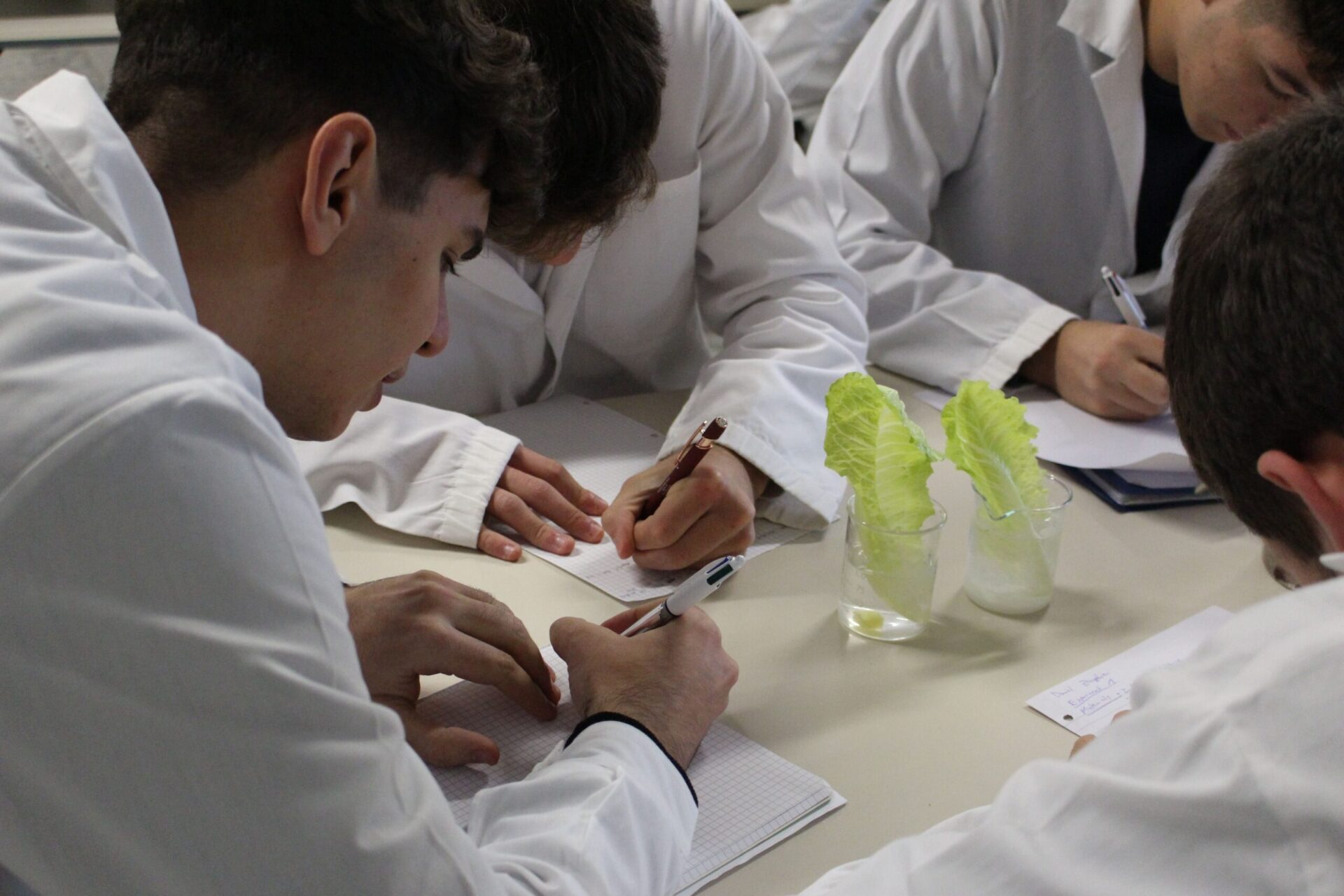
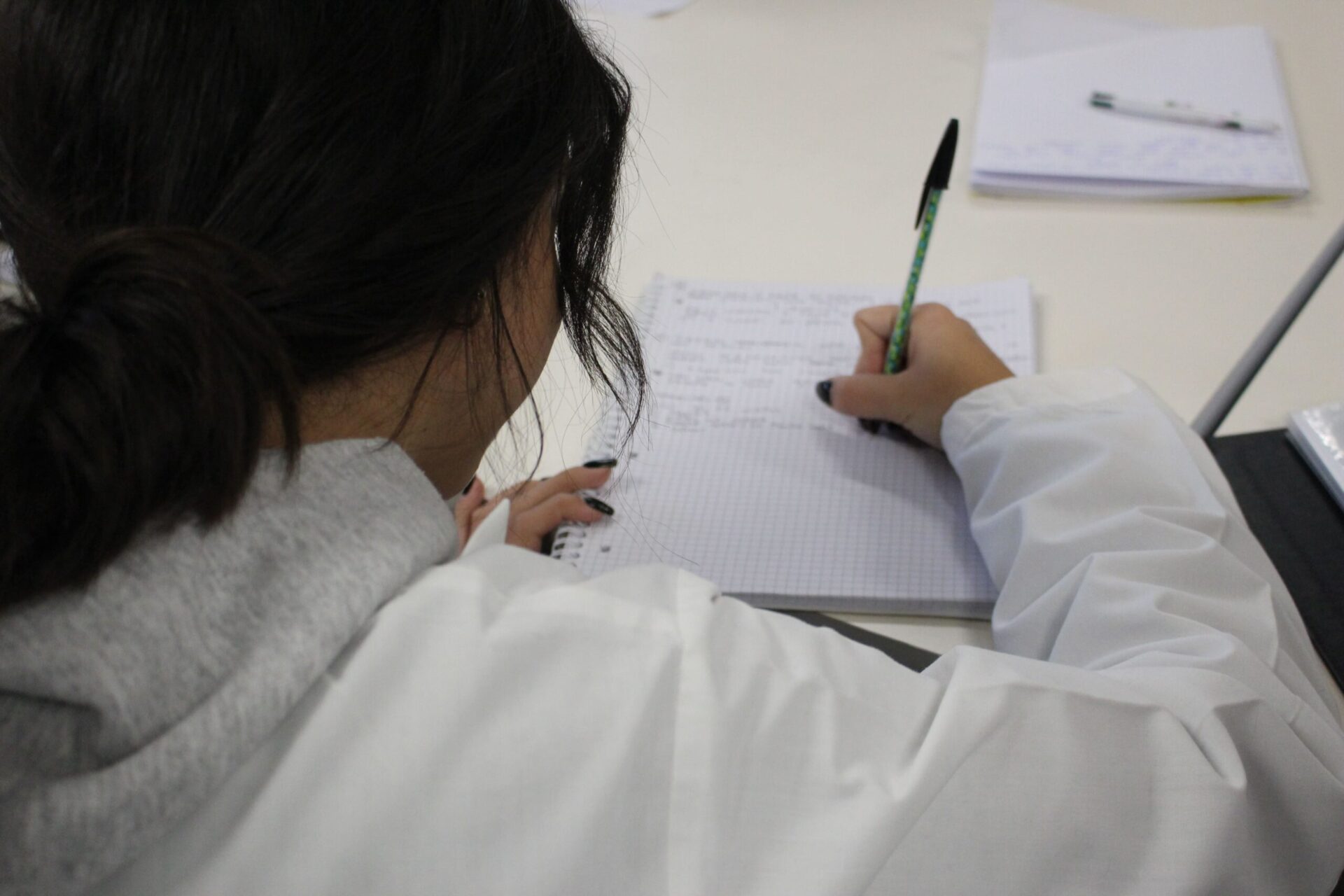
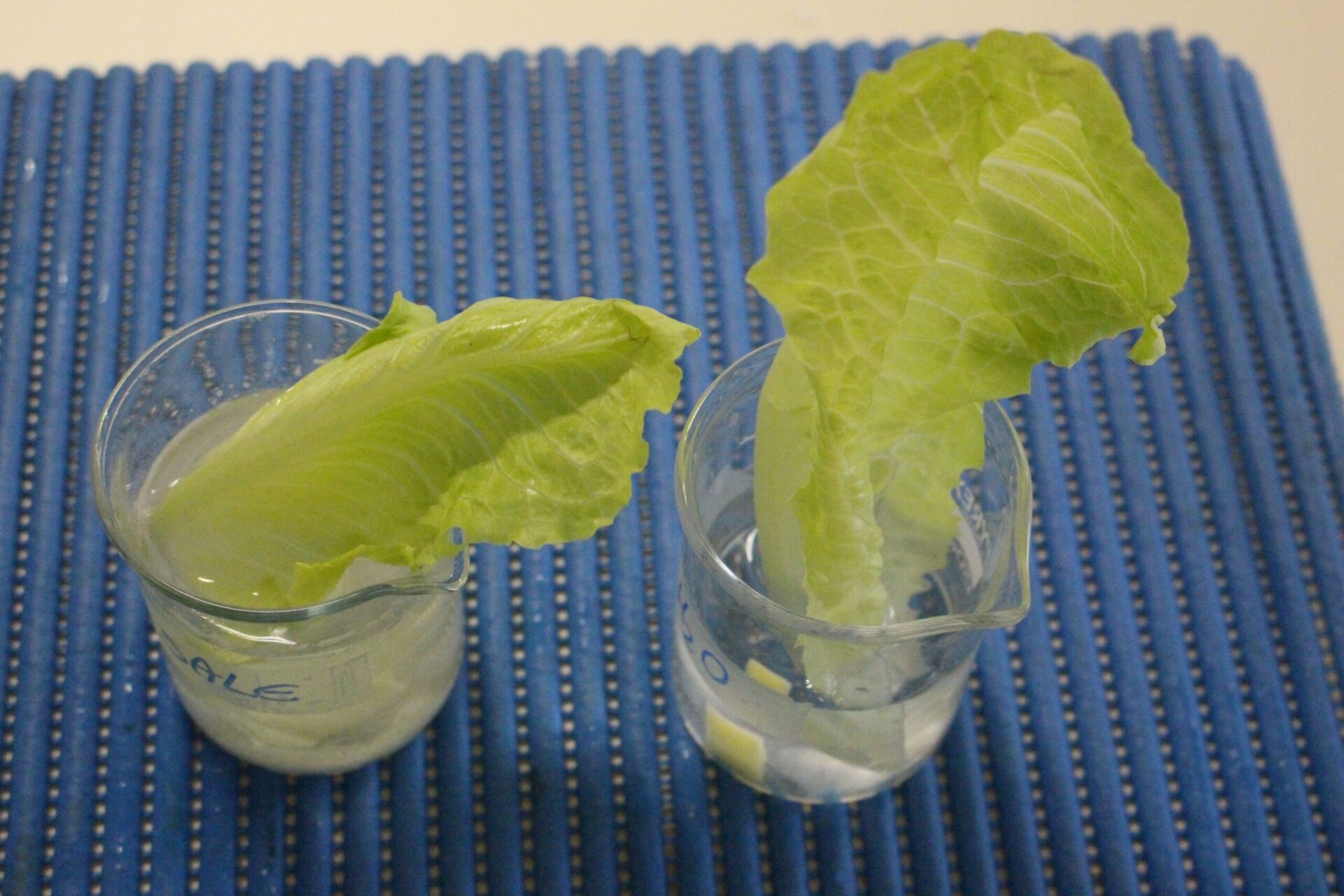
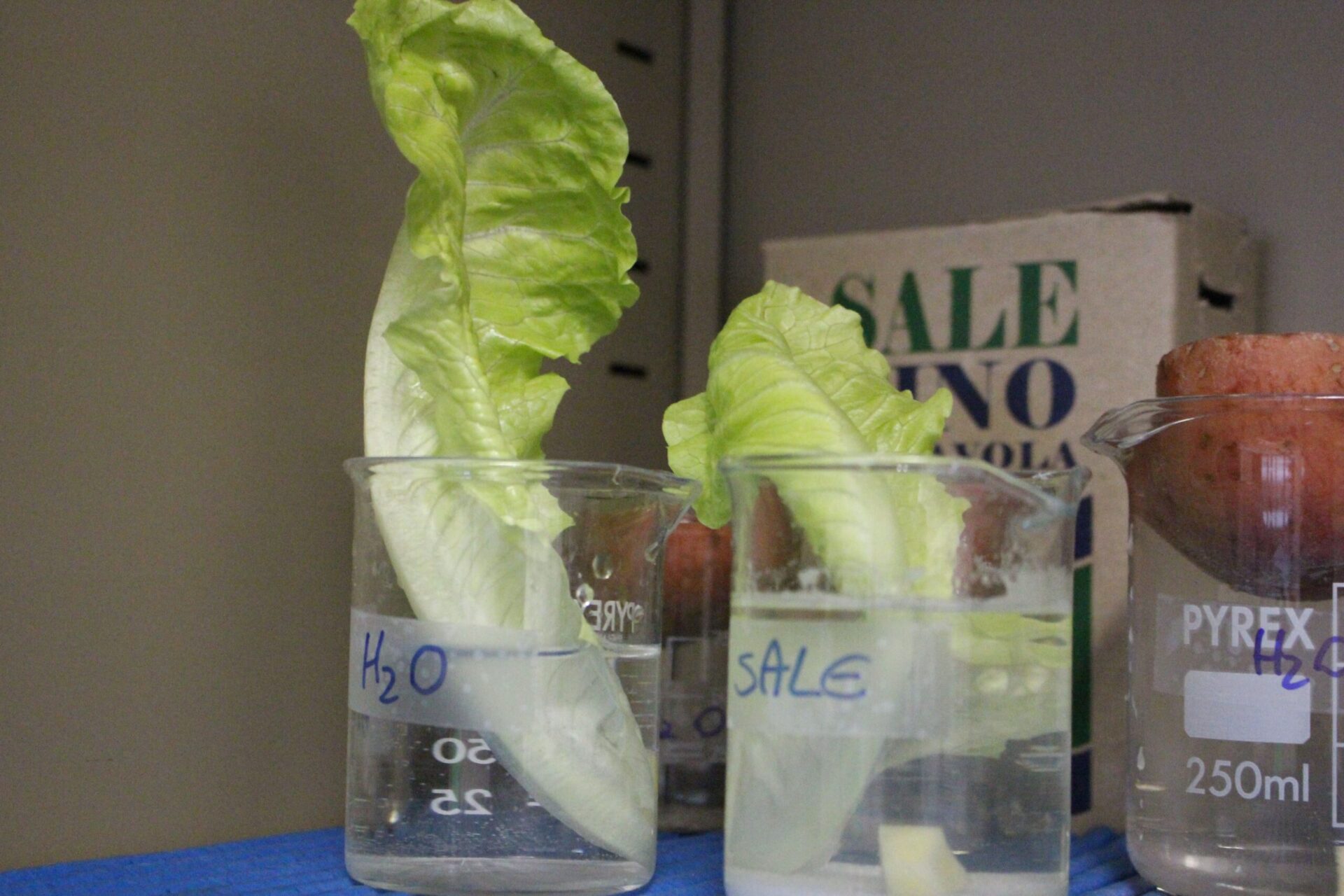
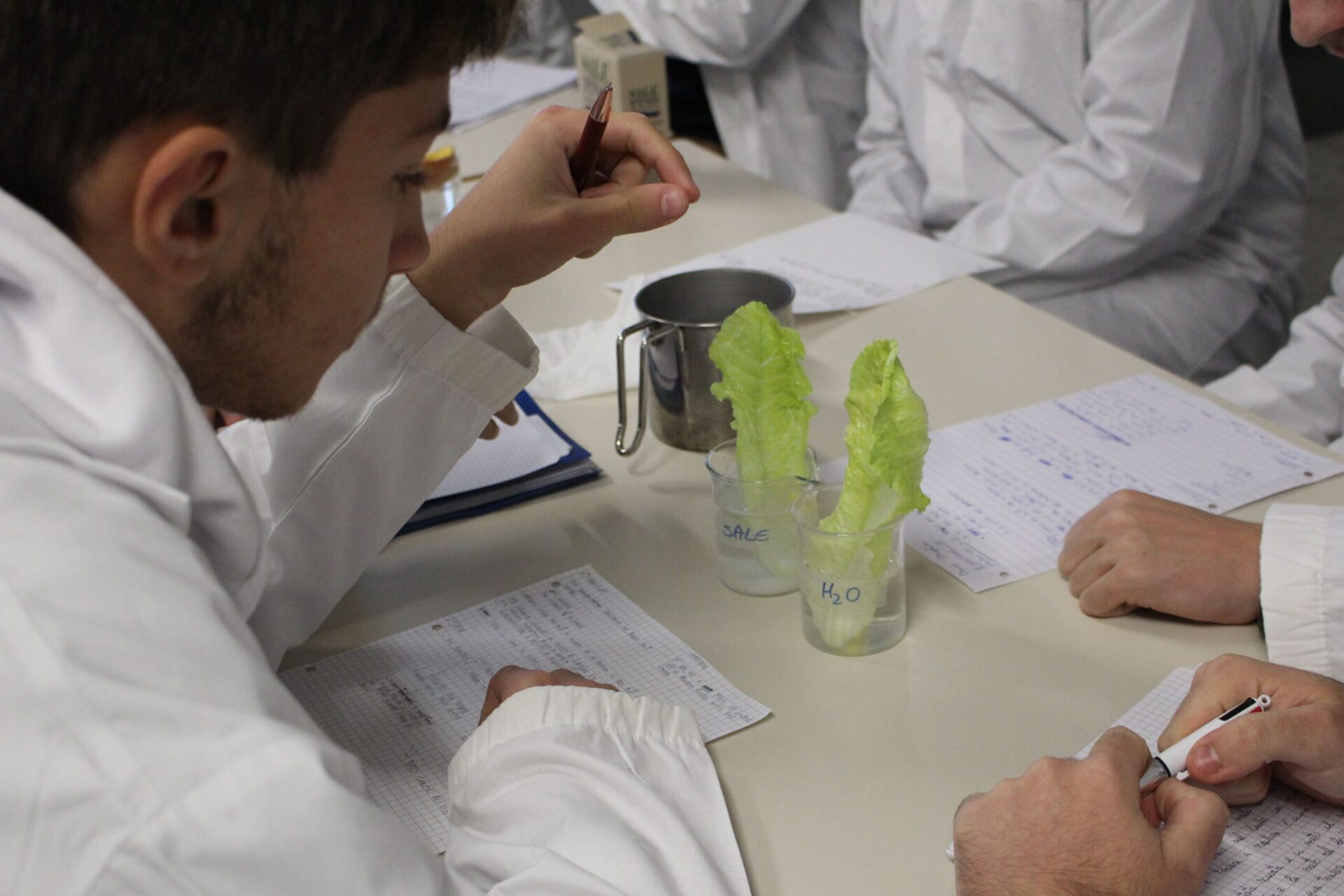
Sono usciti oggi i dati relativi all'indagine Eduscopio 2022, la ricerca della Fondazione Agnelli che monitora gli Istituti che preparano al meglio gli Studenti all'Università e al mondo del lavoro.
La nostra Scuola si è posizionata al secondo posto tra i Licei Linguistici paritari e al quinto posto tra i Licei Scientifici paritari della nostra città.
Siamo davvero felici di questo risultato!
Risultati-eduscopio-2022-scuole-paritarieChi non ha mai sentito la frase: “NULLA SI CREA, NULLA SI DISTRUGGE, TUTTO SI TRASFORMA”?
E’ la prima delle tre leggi ponderali formulata nel 1774 dal chimico francese Antoine Lavoisier.
Scientificamente parlando la legge suona più o meno così: “la somma in massa dei reagenti è sempre uguale alla somma in massa dei prodotti” I ragazzi del 1° Liceo Scientifico hanno dimostrato la veridicità di questa importante legge utilizzando un palloncino, aceto e bicarbonato di sodio osservando che sì, Monsier Lavoisier aveva proprio ragione!!
In 1774 the French chemist Antoine Lavoisier performed experiments proving the law of conservation of mass. This law states that in a chemical reaction, matter cannot be created or destroyed, but it can change forms. That means that the mass of all reactants in a reaction will be equal to the mass of all the products. Our first year Scientific High School students proved this law to be true using some simple materials, a balloon, vinegar, and baking soda. As the reaction took place the gas created moved from the flask into the balloon. Exactly as the law states, they discovered that even though mass may change forms in a chemical reaction the matter is neither created or destroyed.
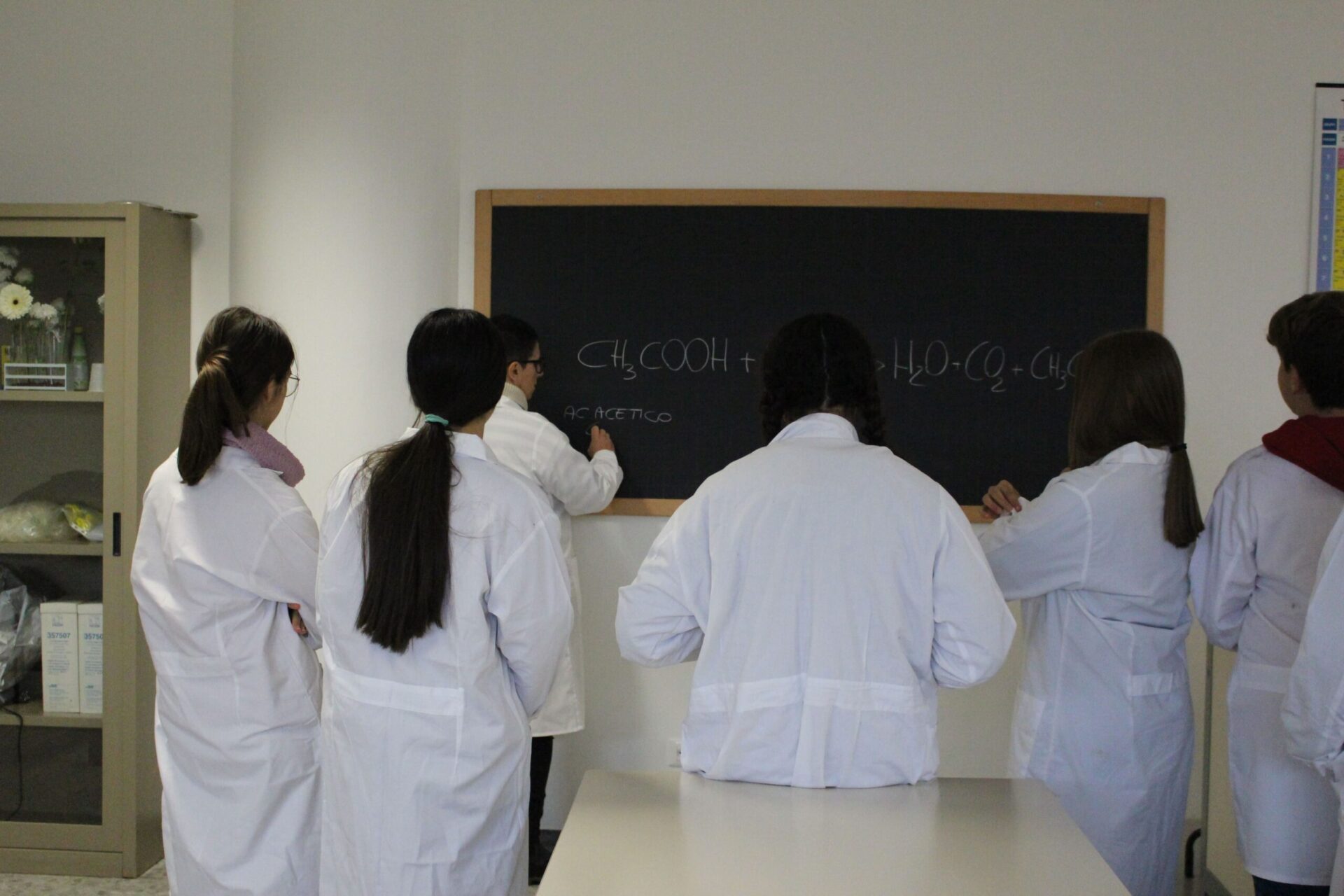
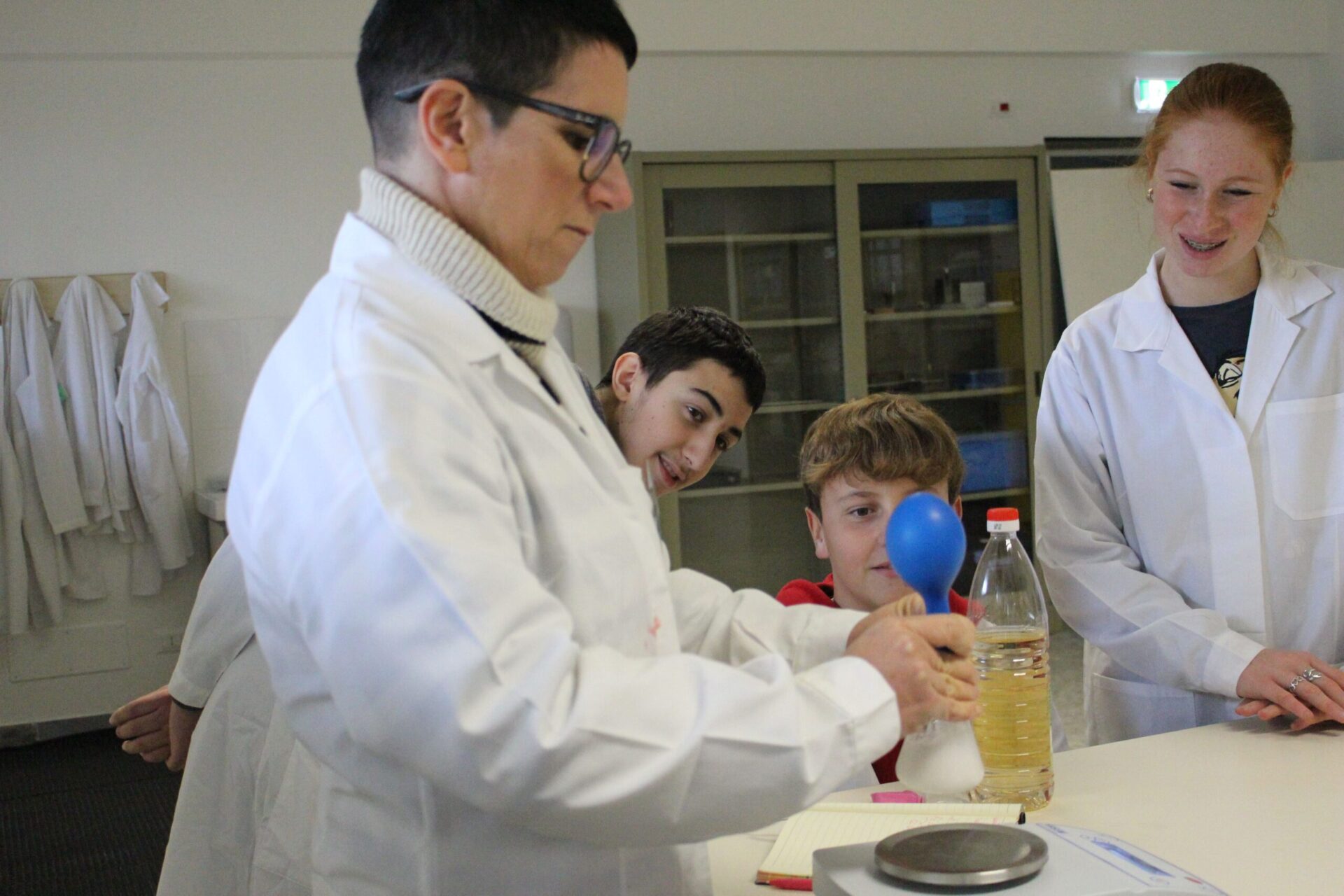
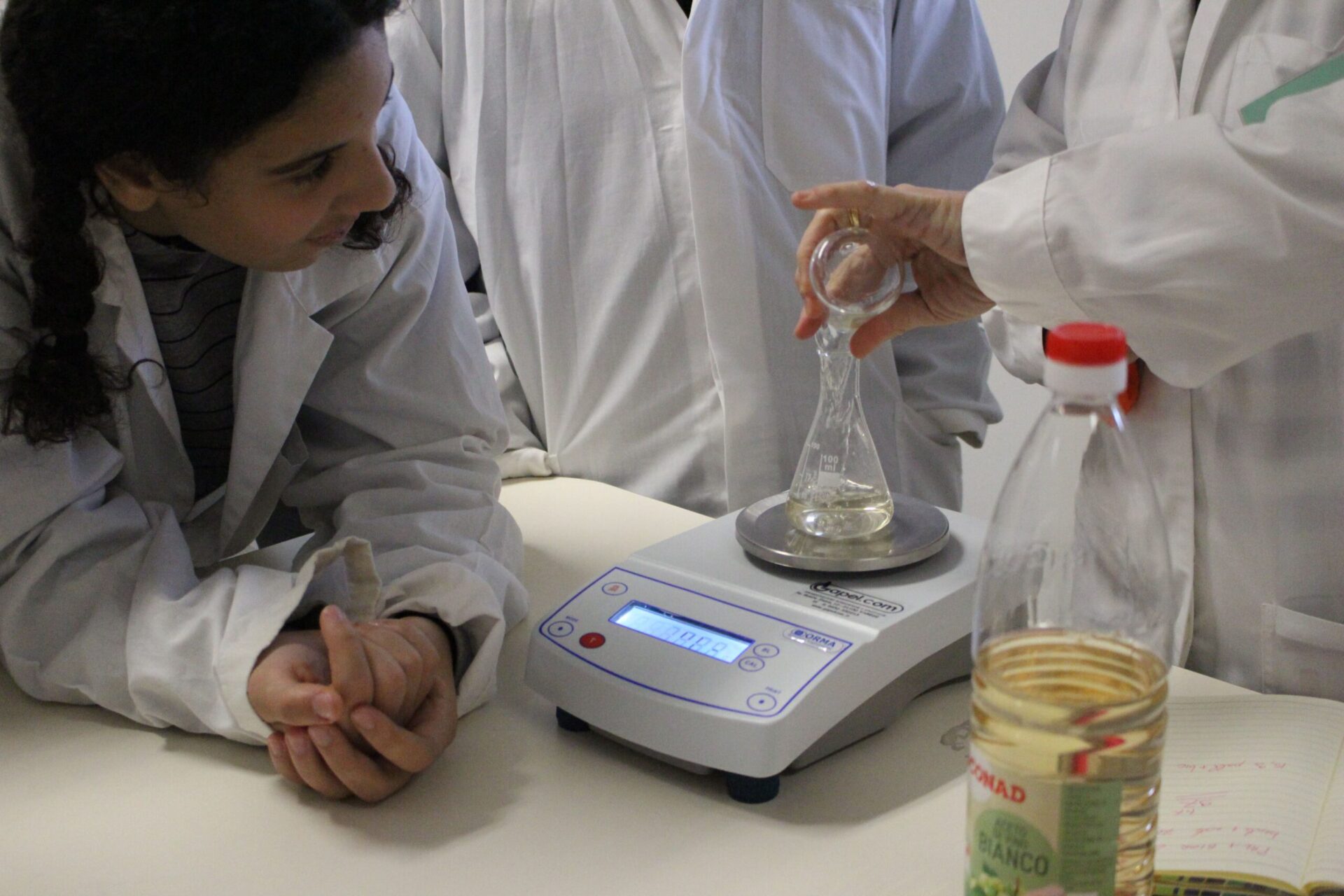
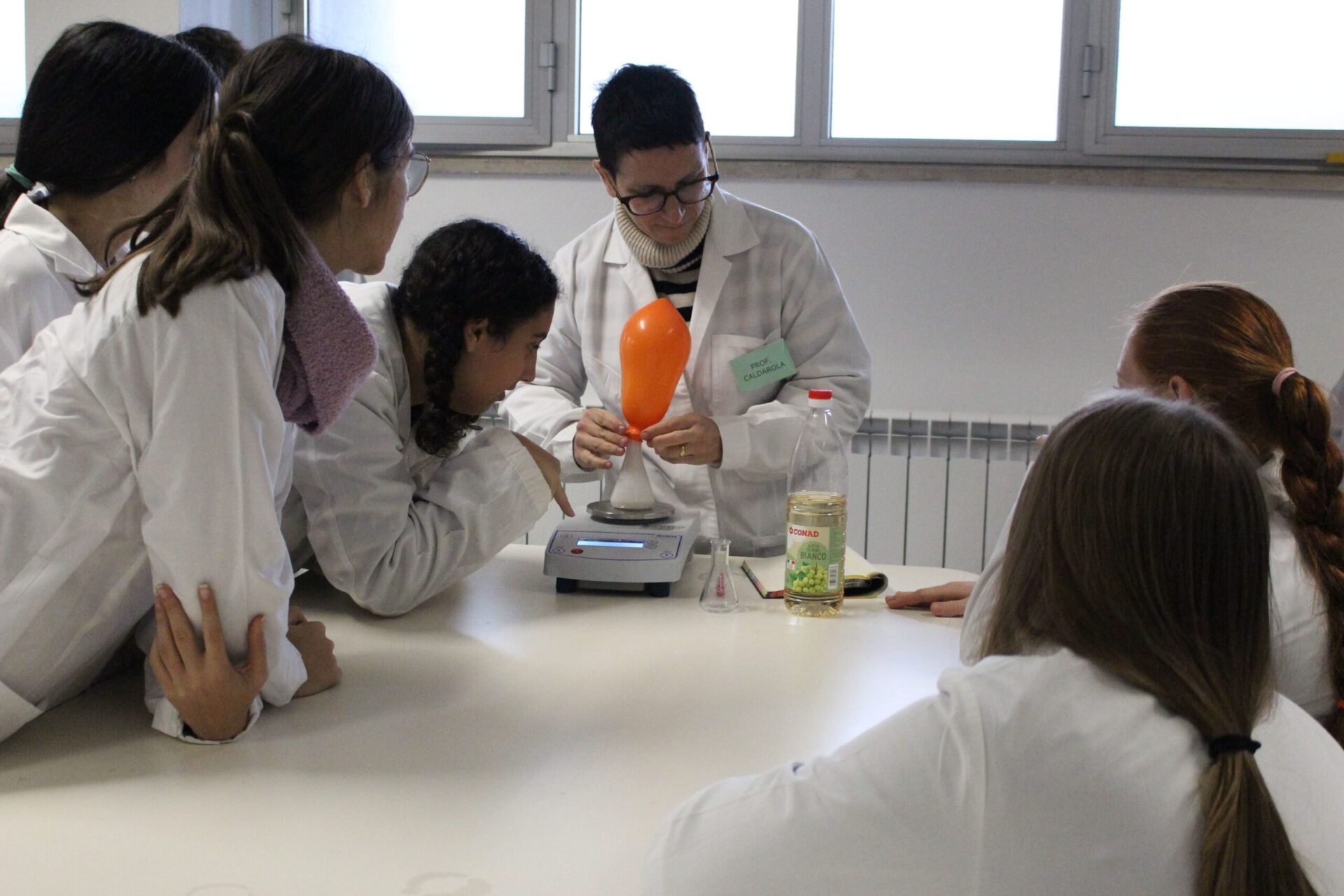
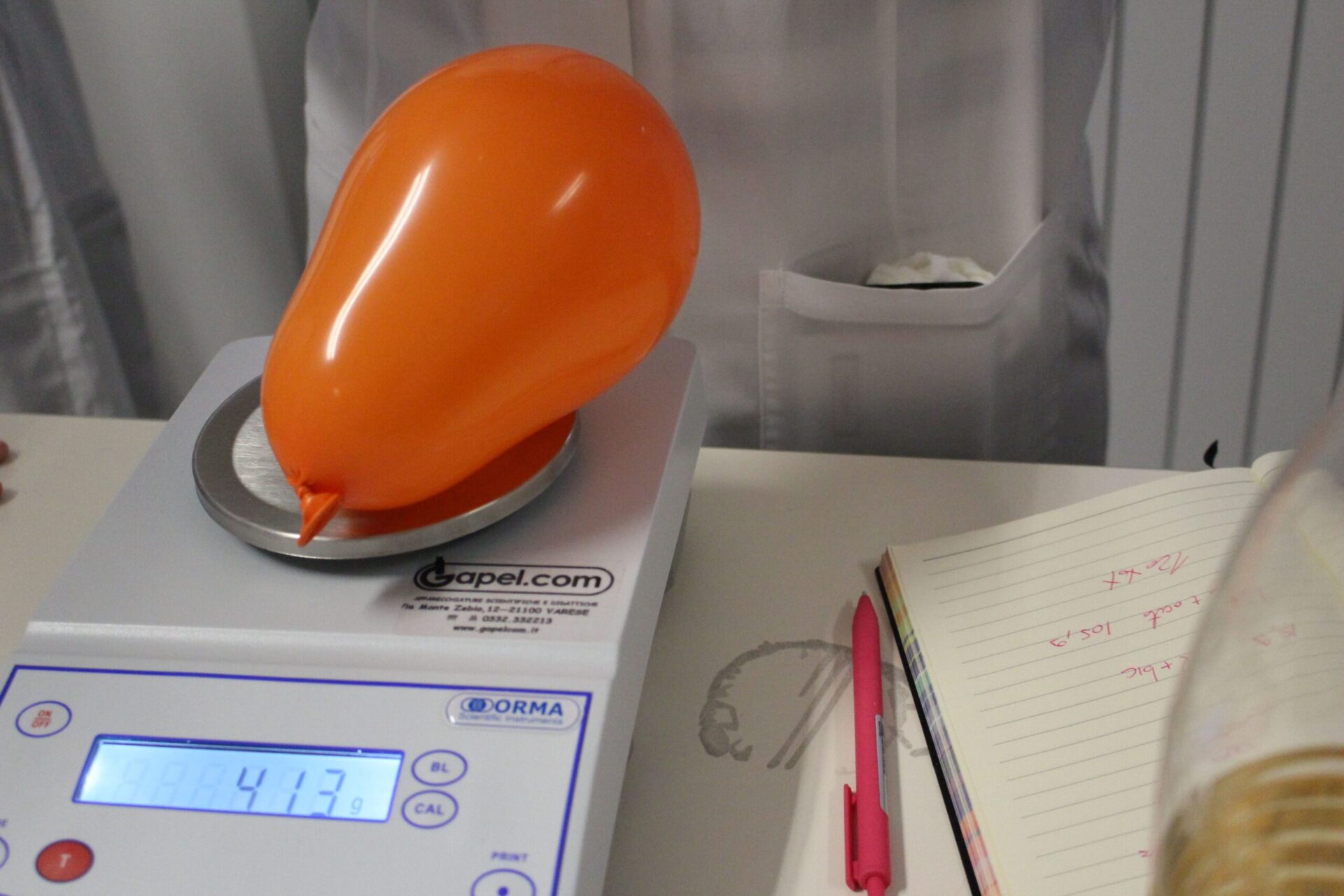
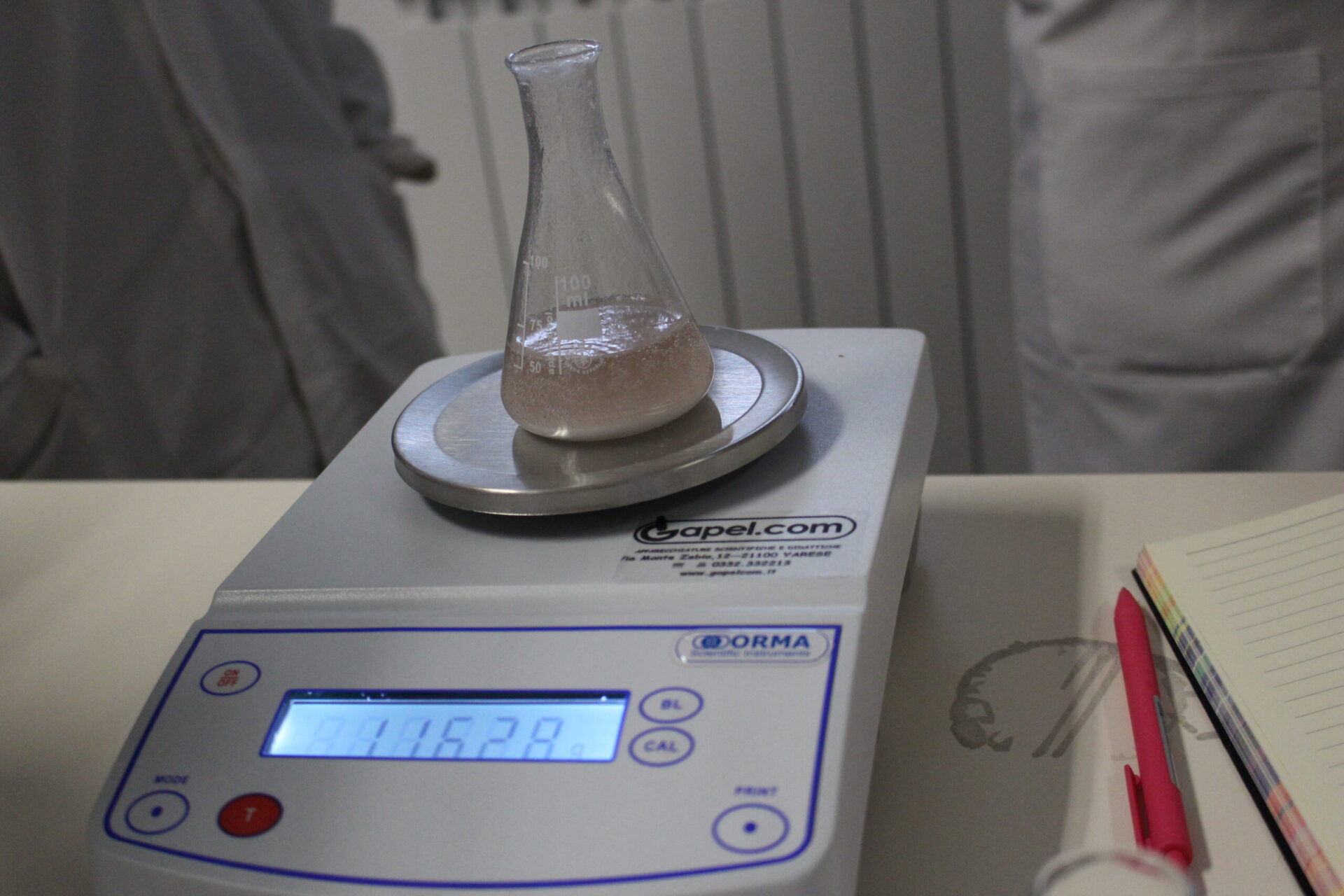
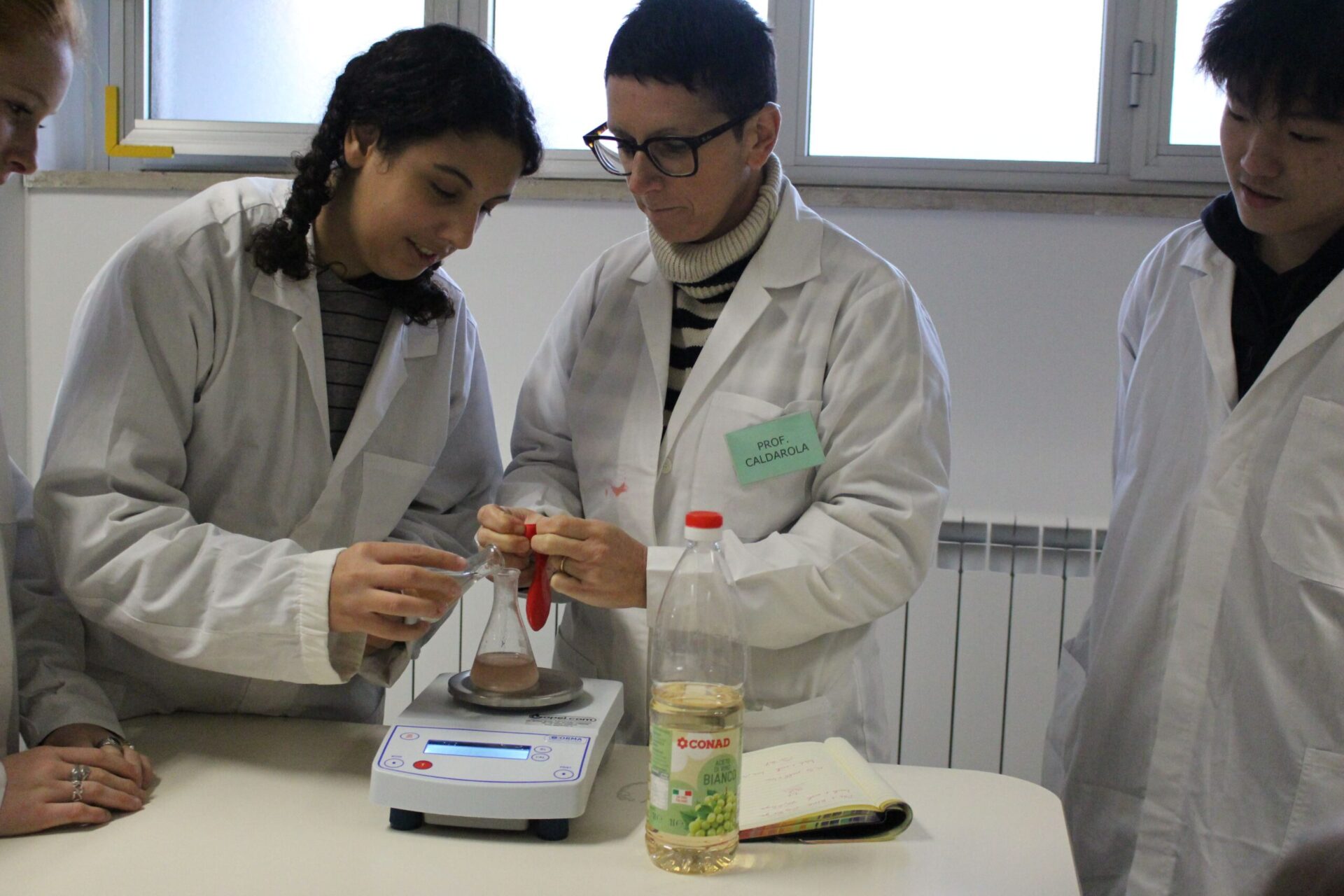
I ragazzi del 5° Liceo Scientifico hanno trattato con Lugol, un composto contenente Iodio, pezzetti di zucchine, melanzane, formaggio, pane, castagne, patate, mela e biscotti. Lo Iodio, intercalandosi nella struttura elicoidale dell’amido, cambia colore e da rosso diventa blu scuro. L’analisi del viraggio del colore permette quindi di rilevare la presenza o meno dell’amido in tutti gli alimenti analizzati.
Our brilliant 5th year Scientific High School biologists in training put a variety of foods to the starch test. In order to identify starchy foods, they employed a testing technique which uses iodine to detect foods containing starches. When the iodine comes in contact with starchy foods it automatically turns a blue/black colour. Our students tested a variety of foods such as zucchini, biscuits, eggplant, bread, chestnuts, apples and of course potatoes. Take a look at their results.
